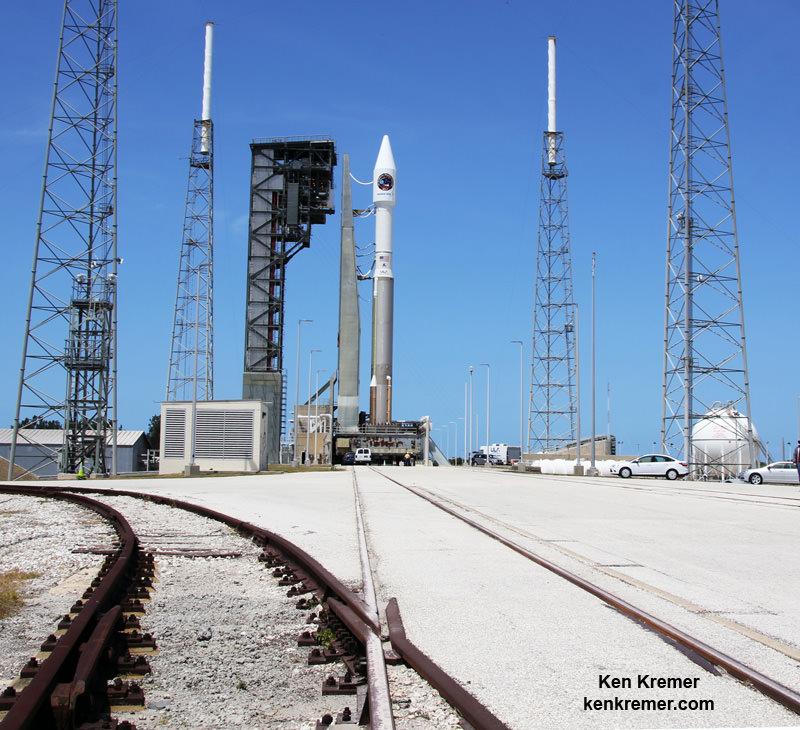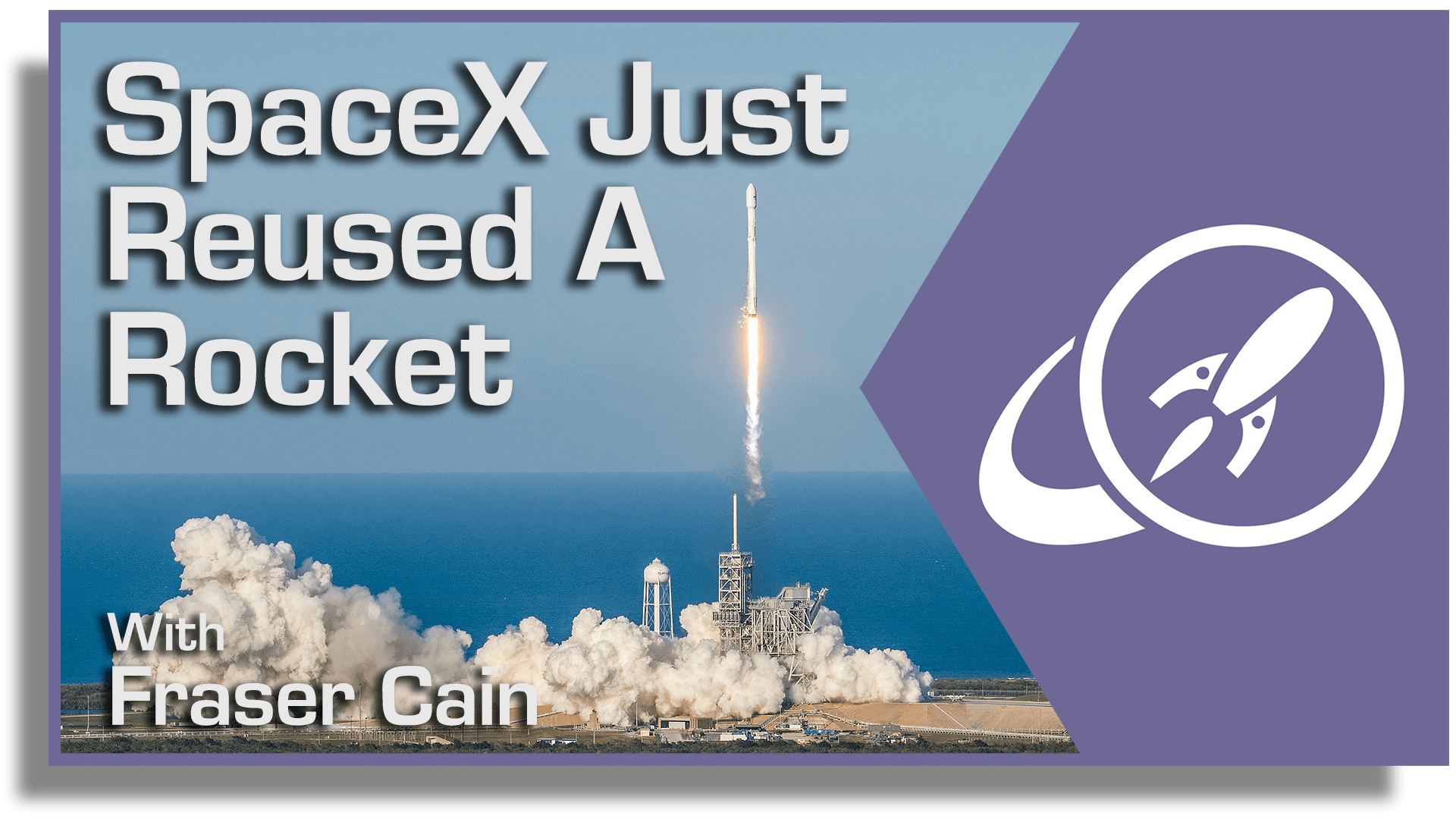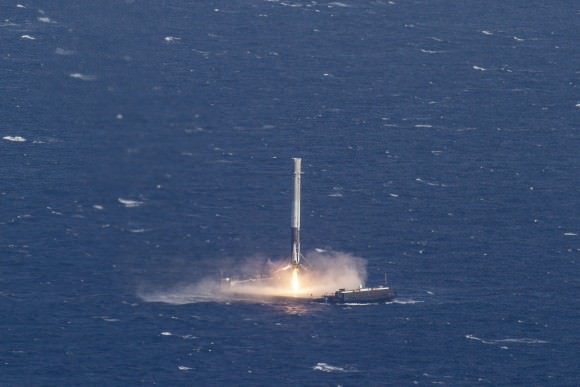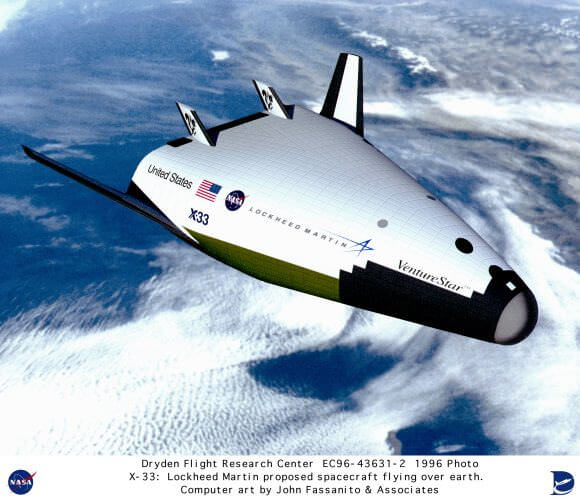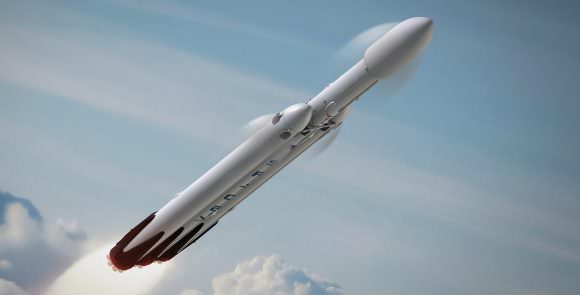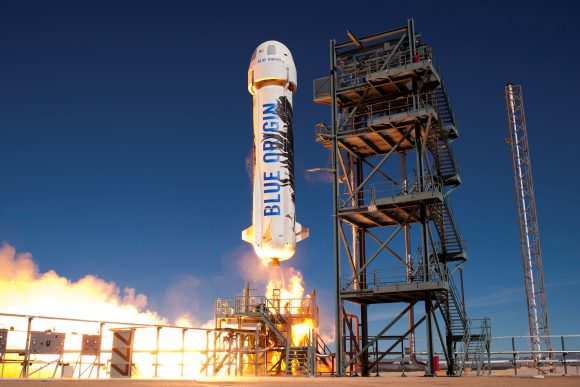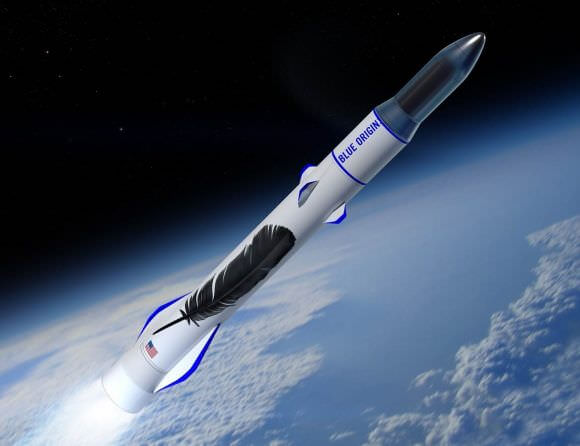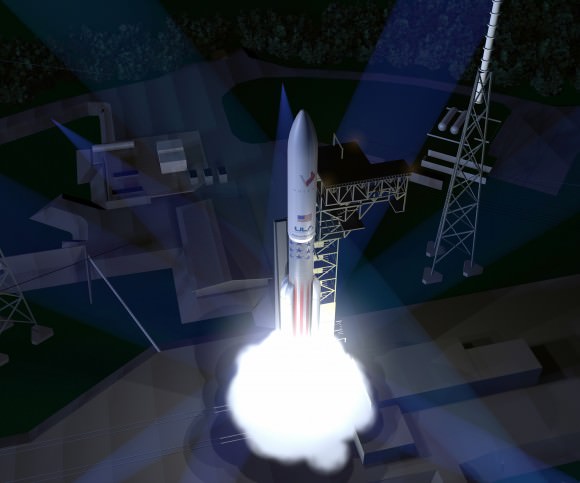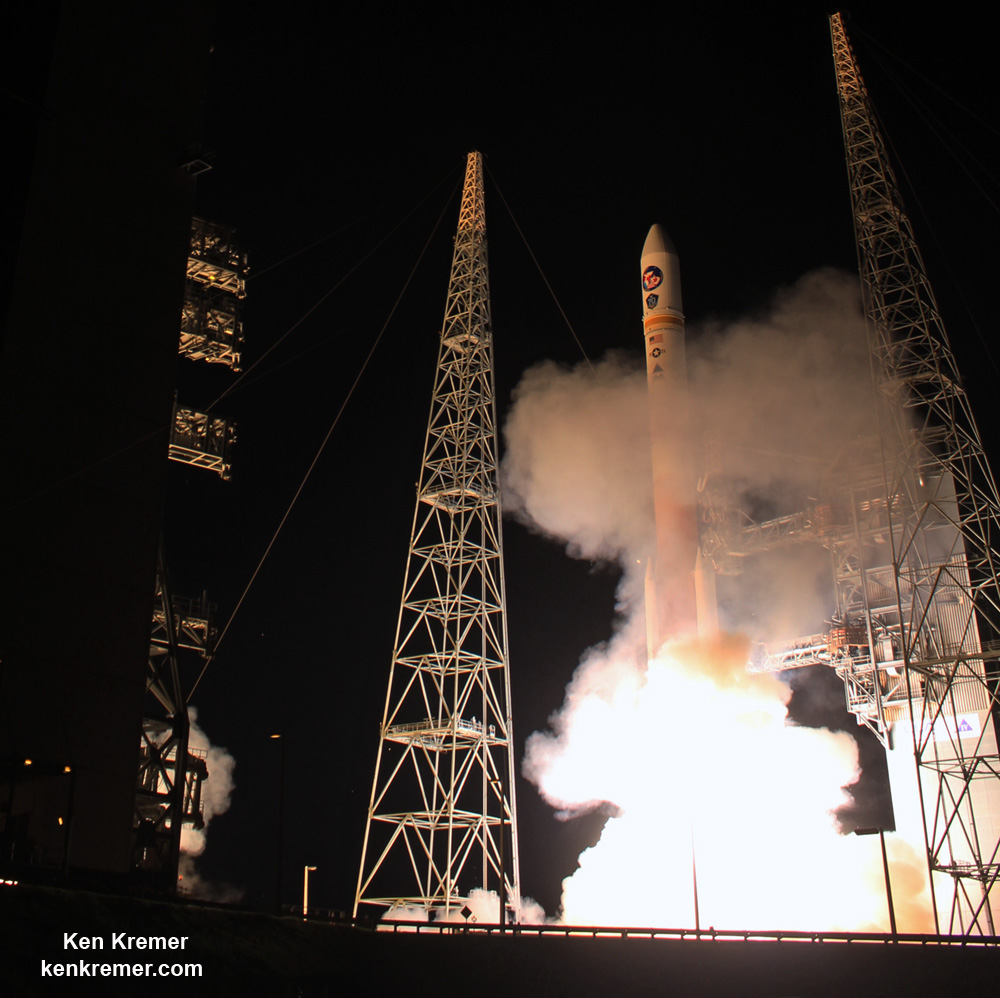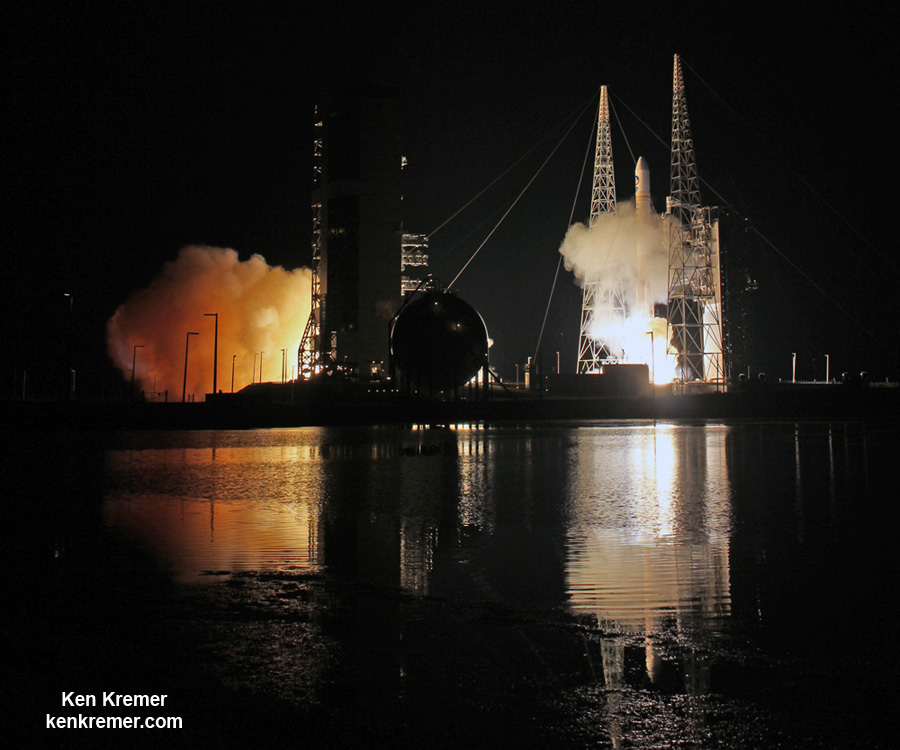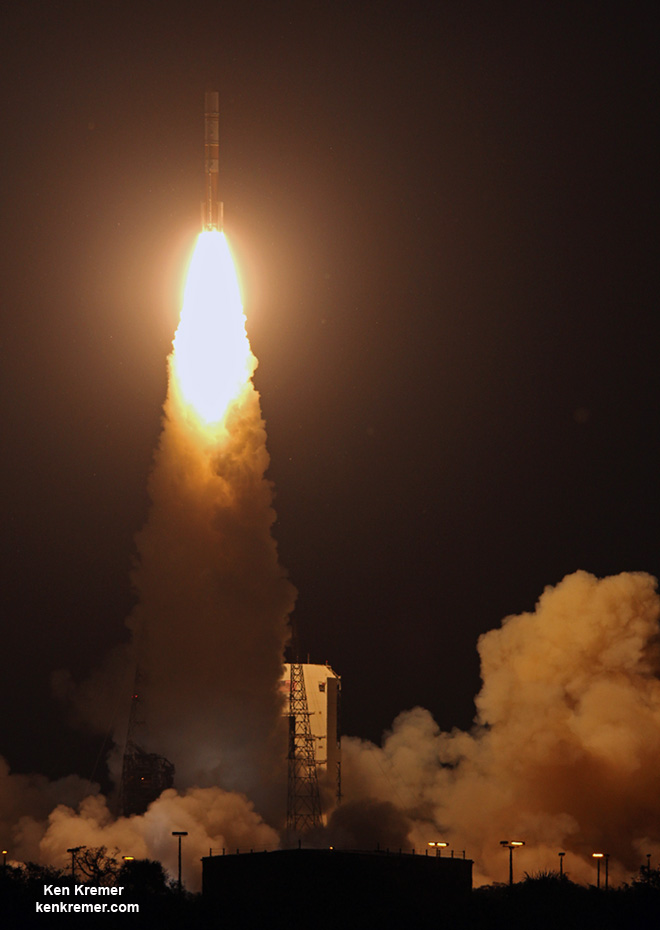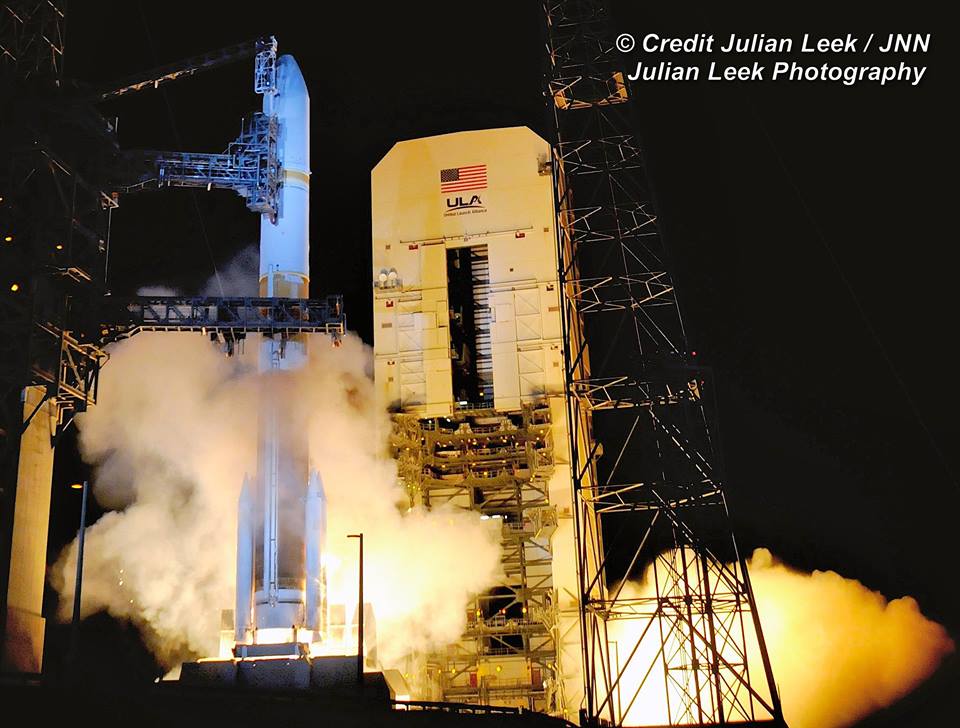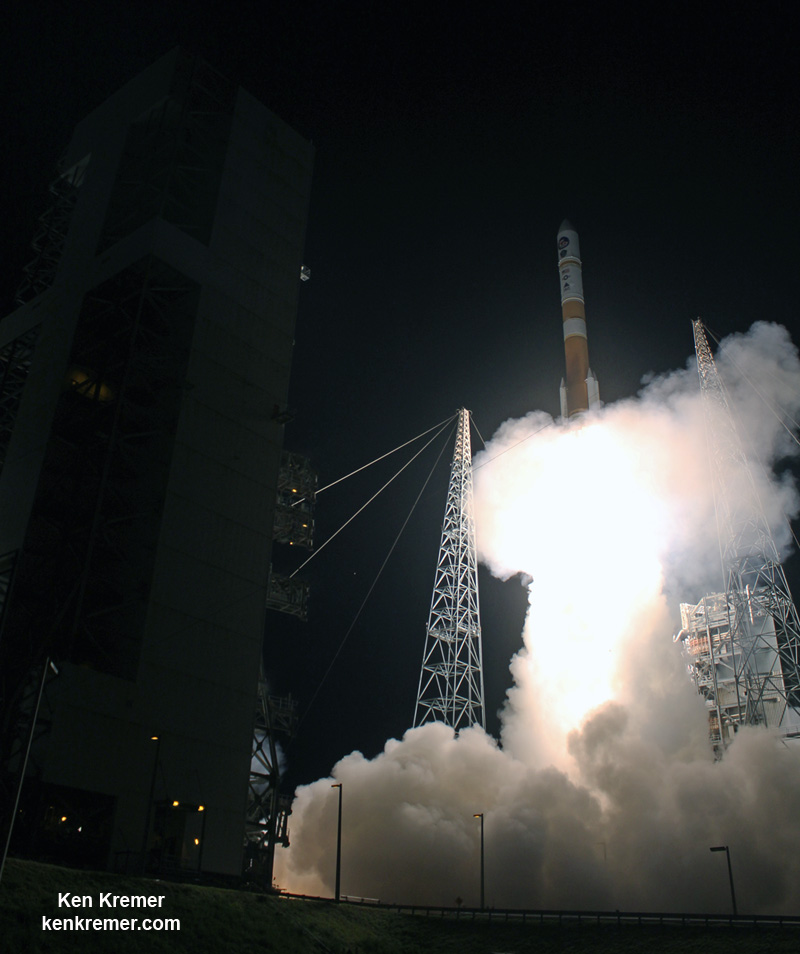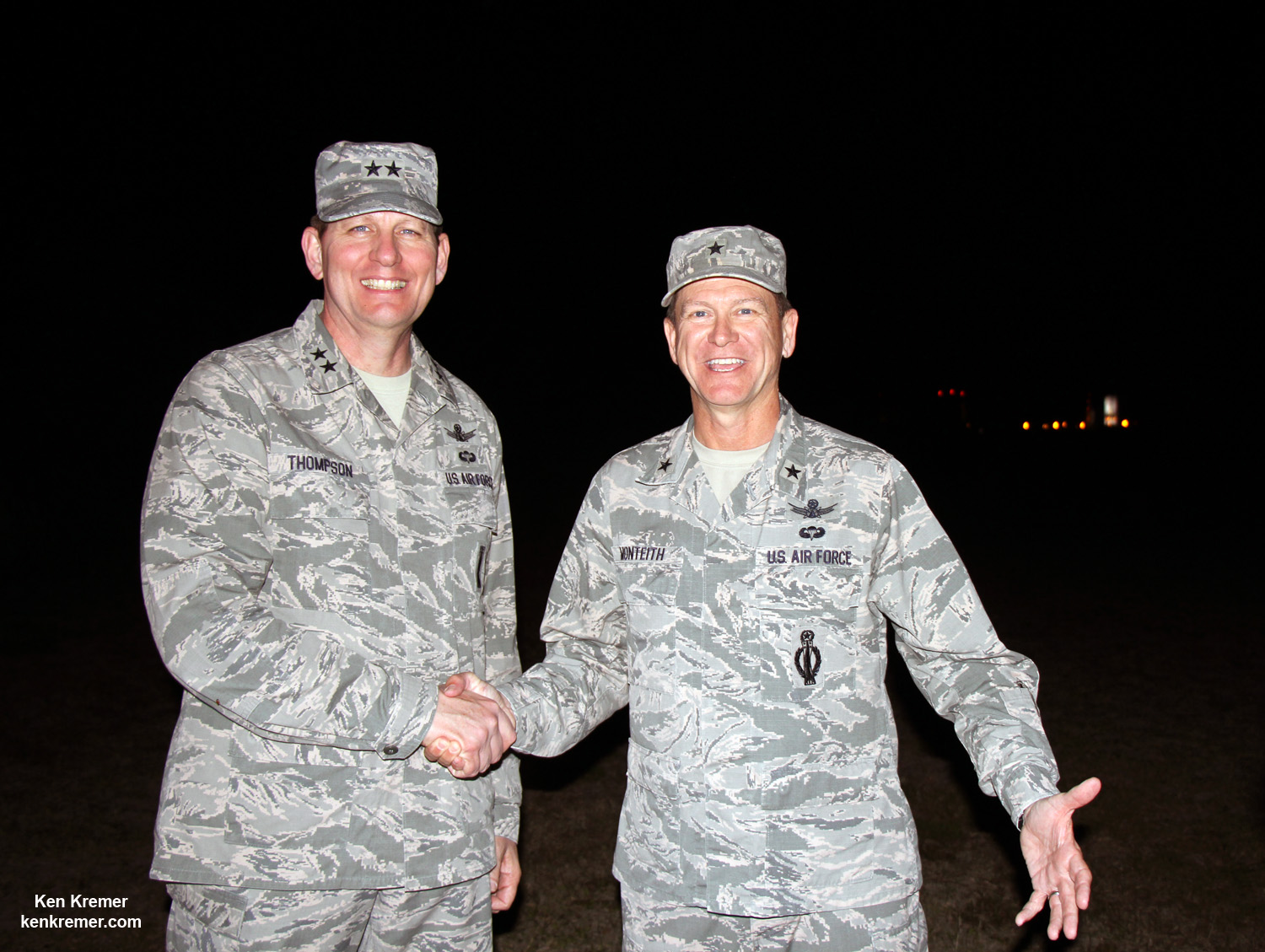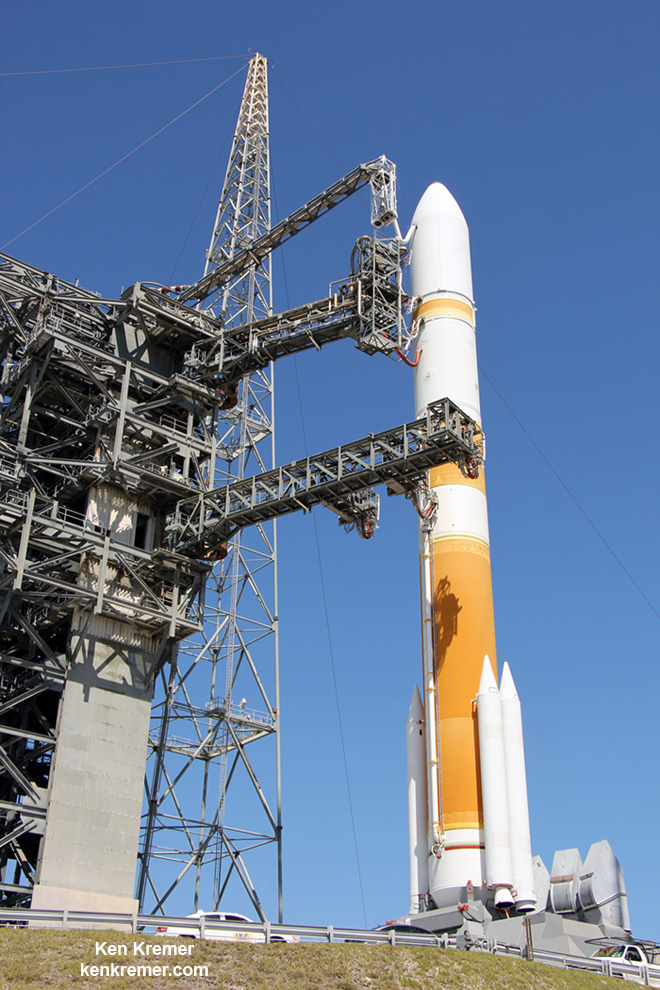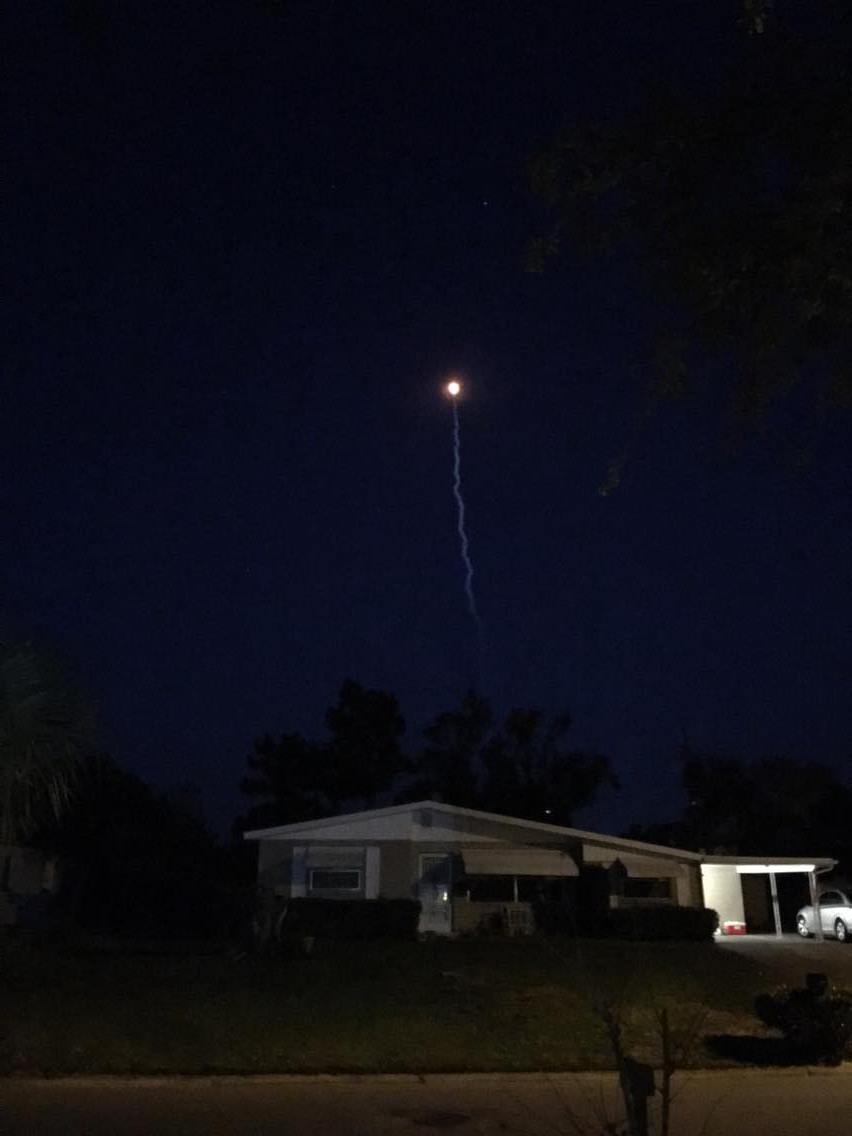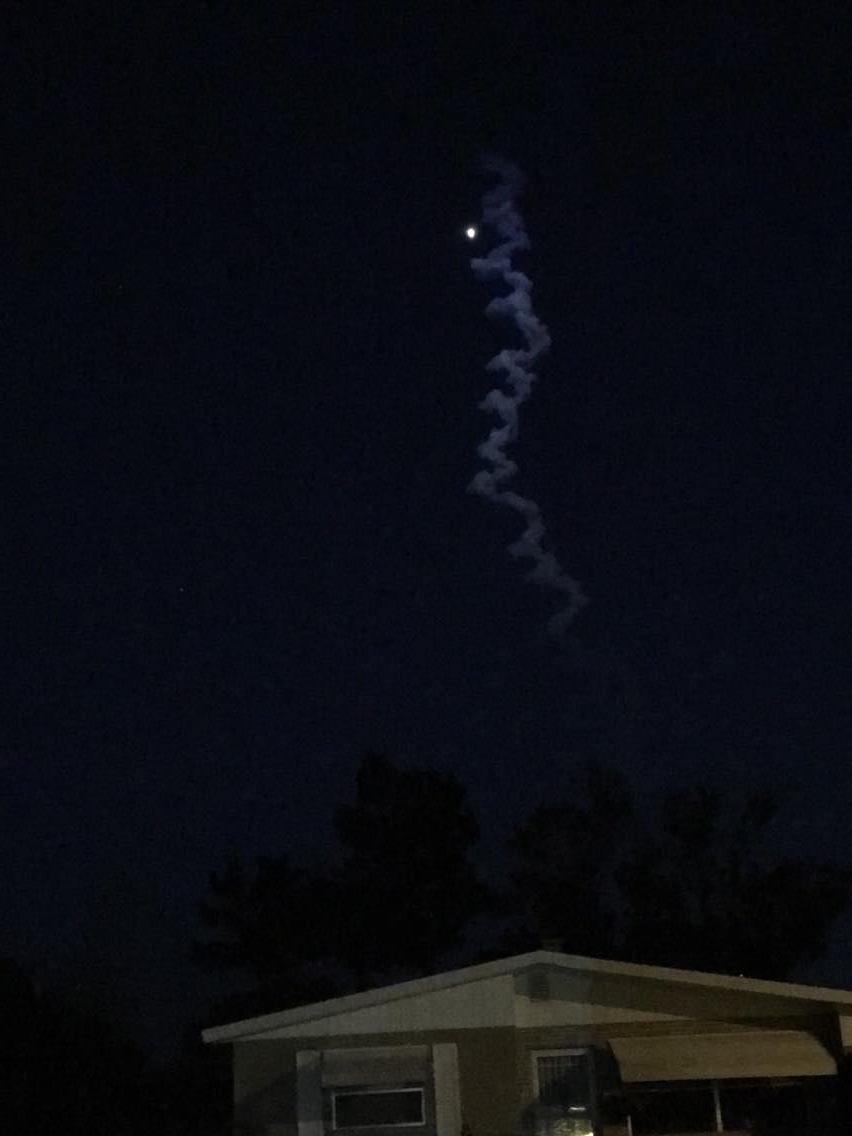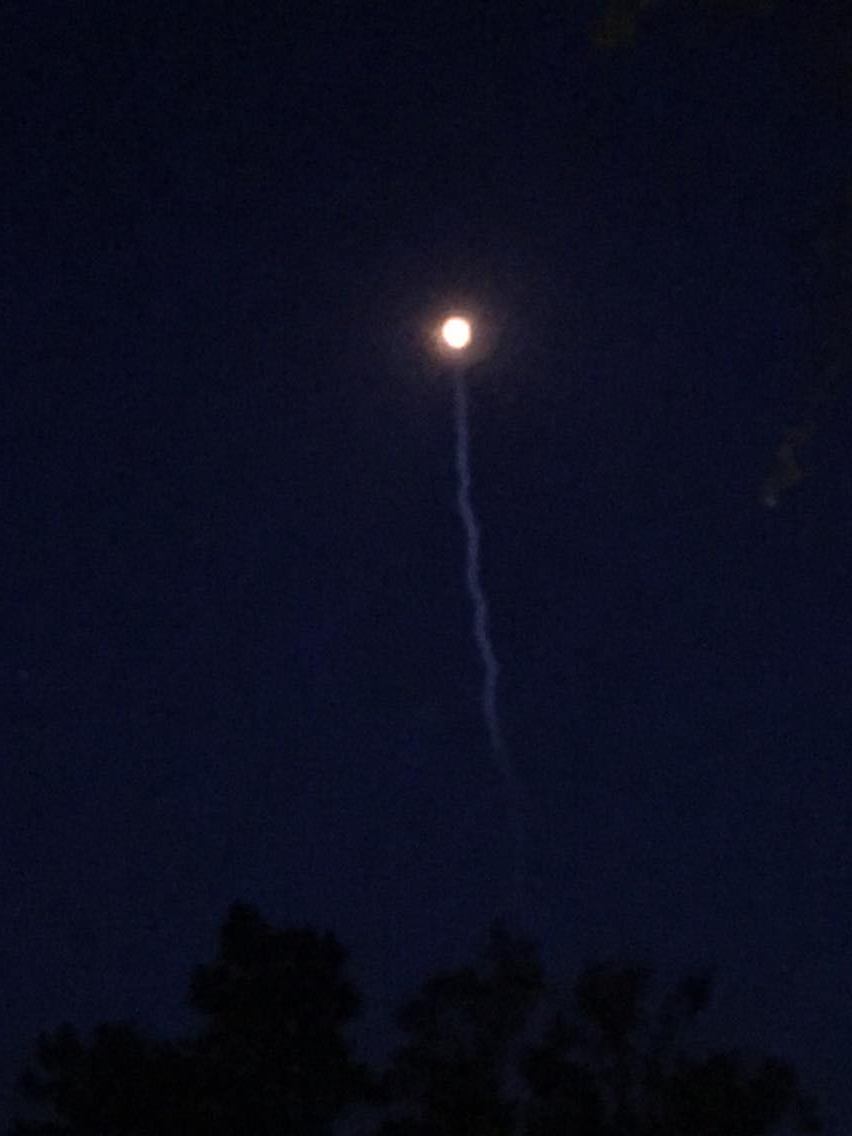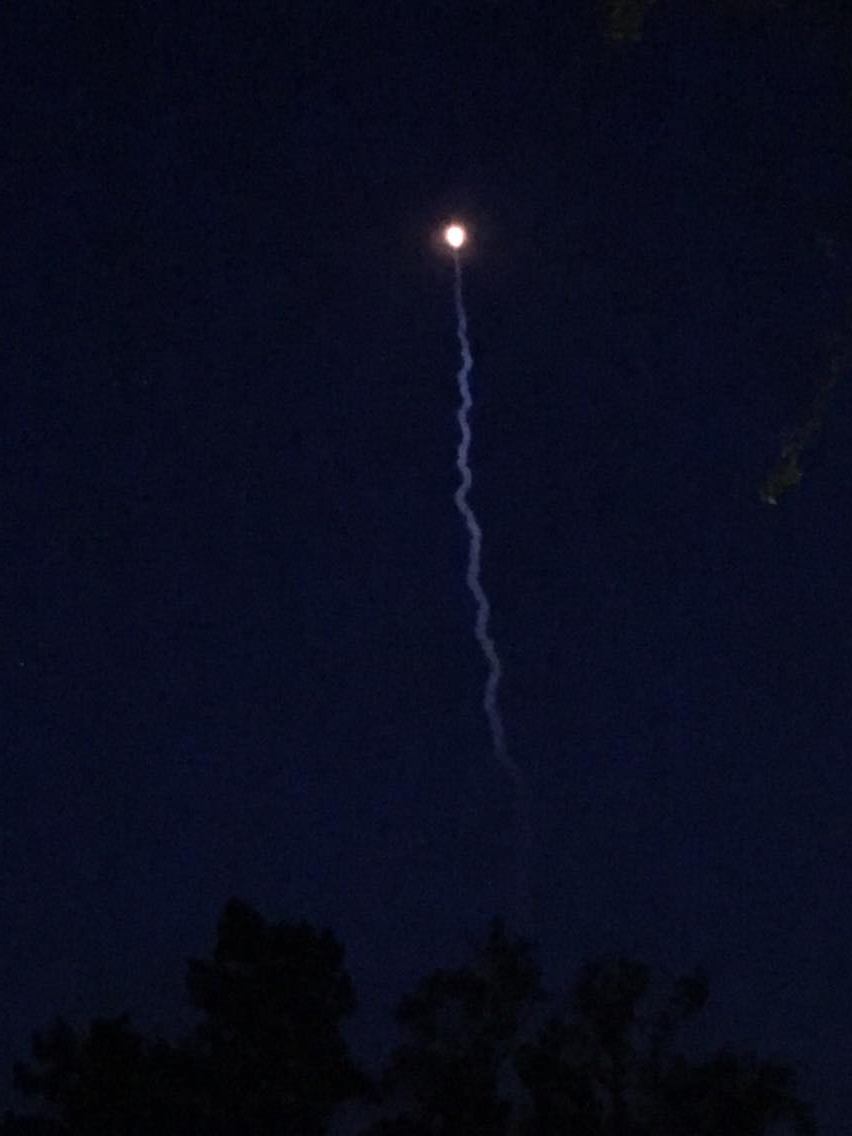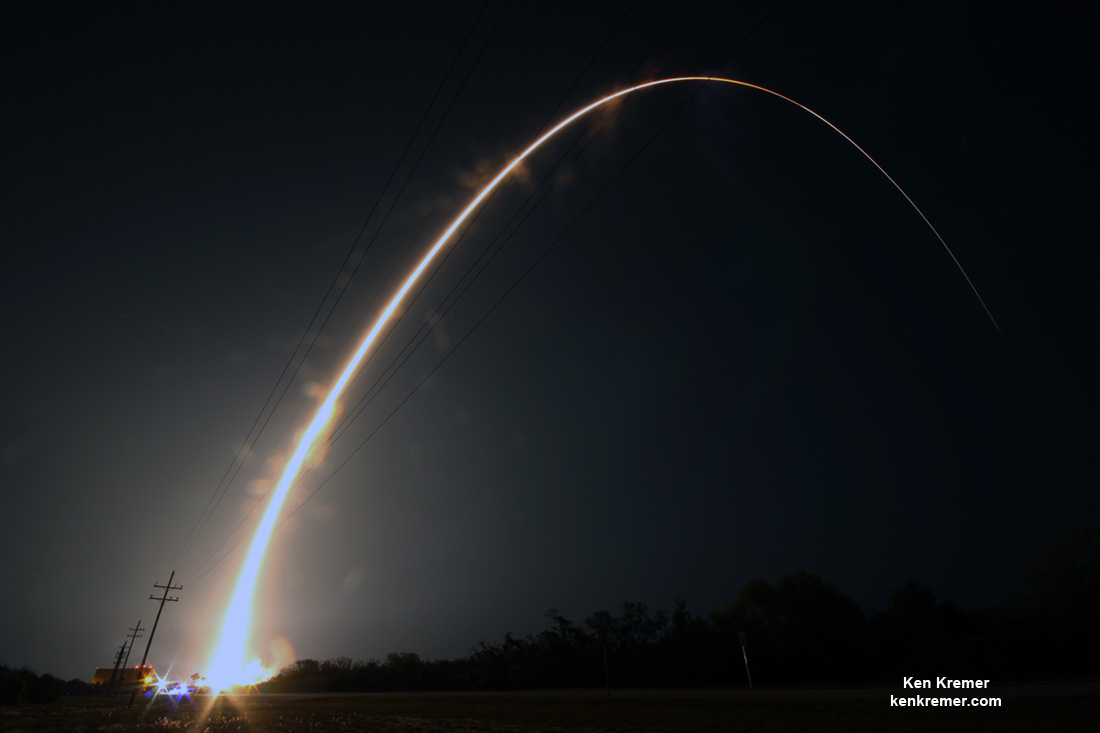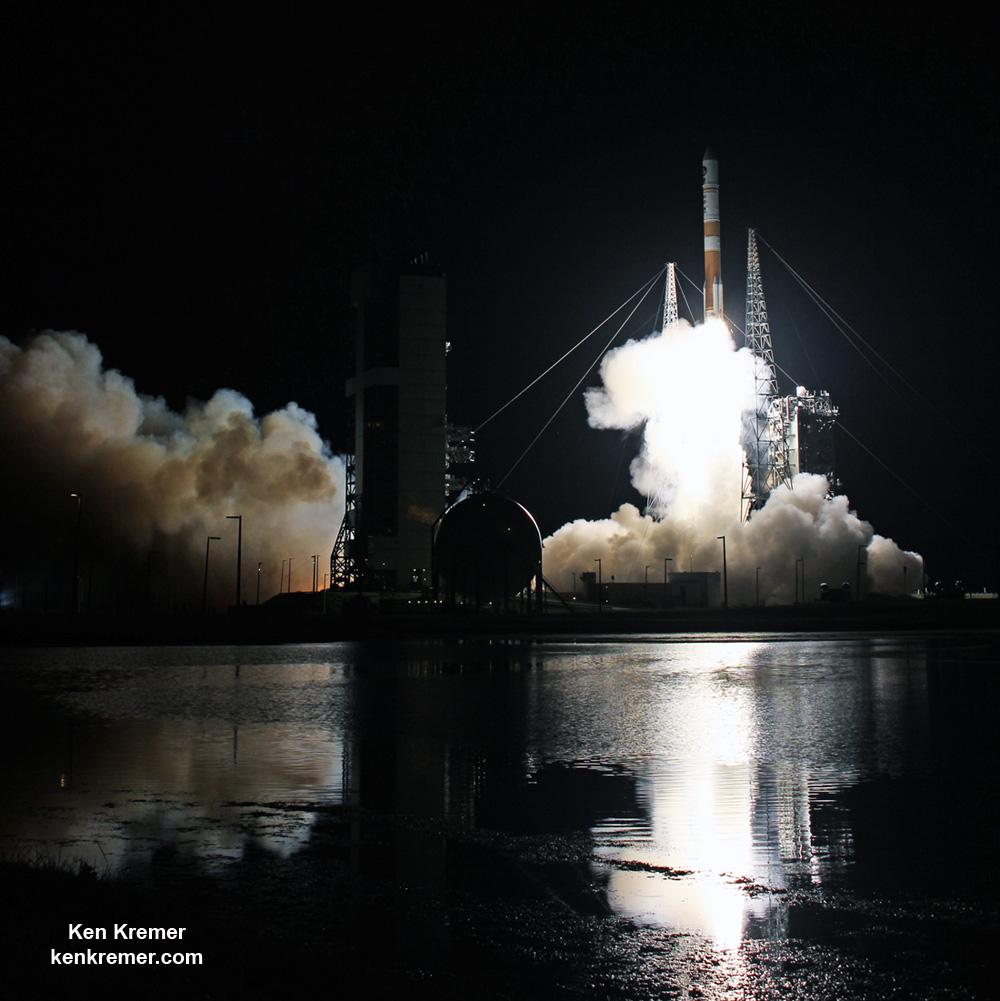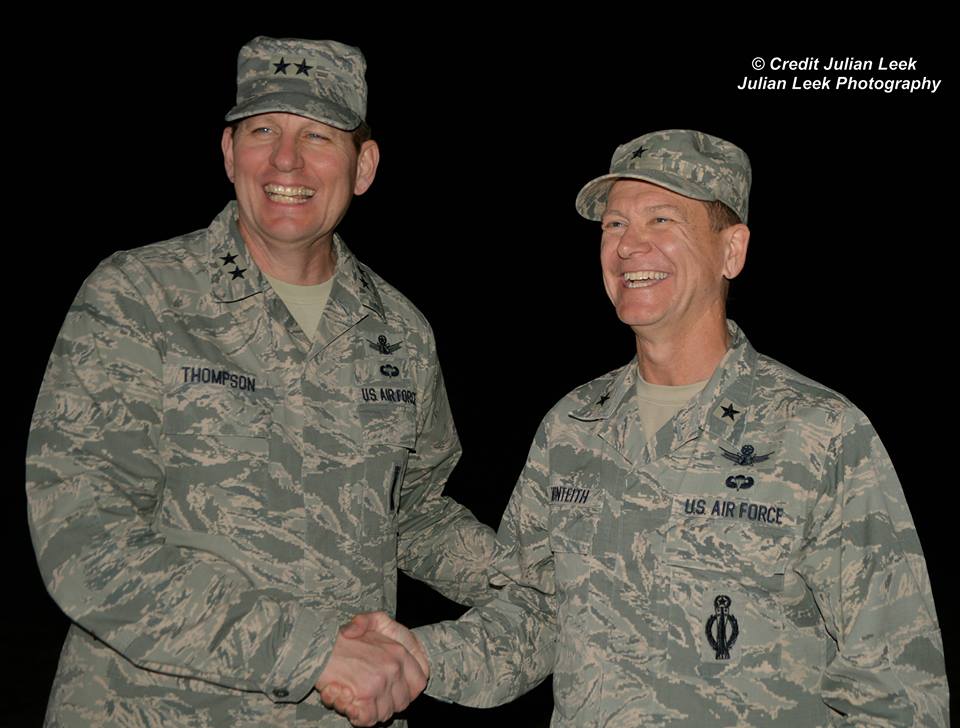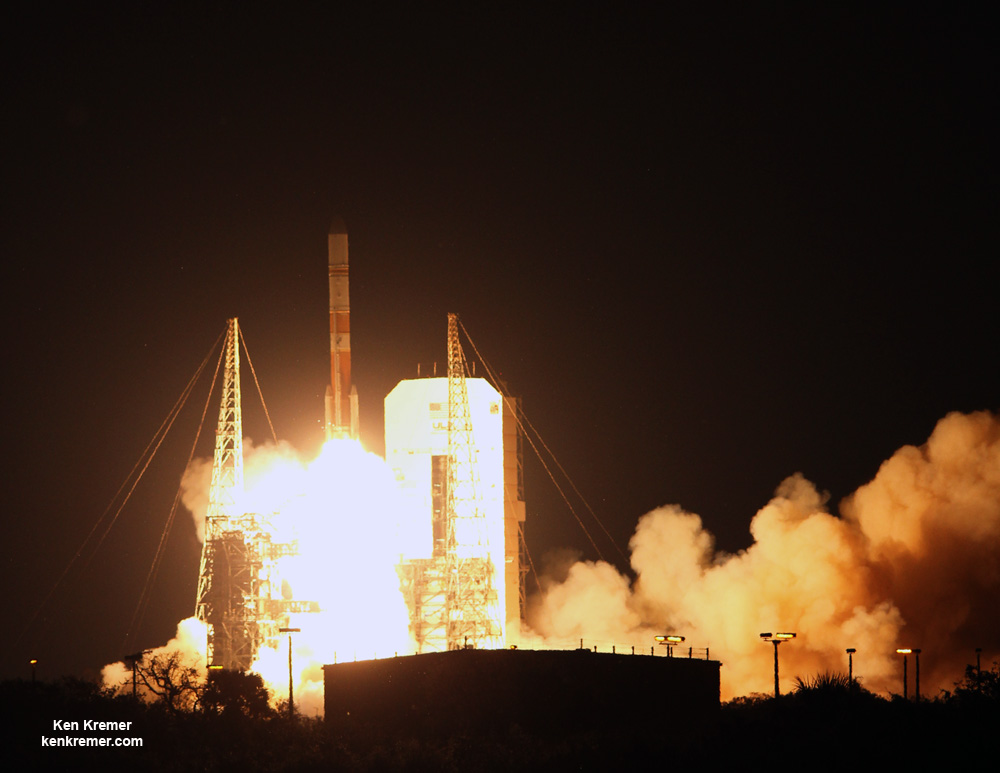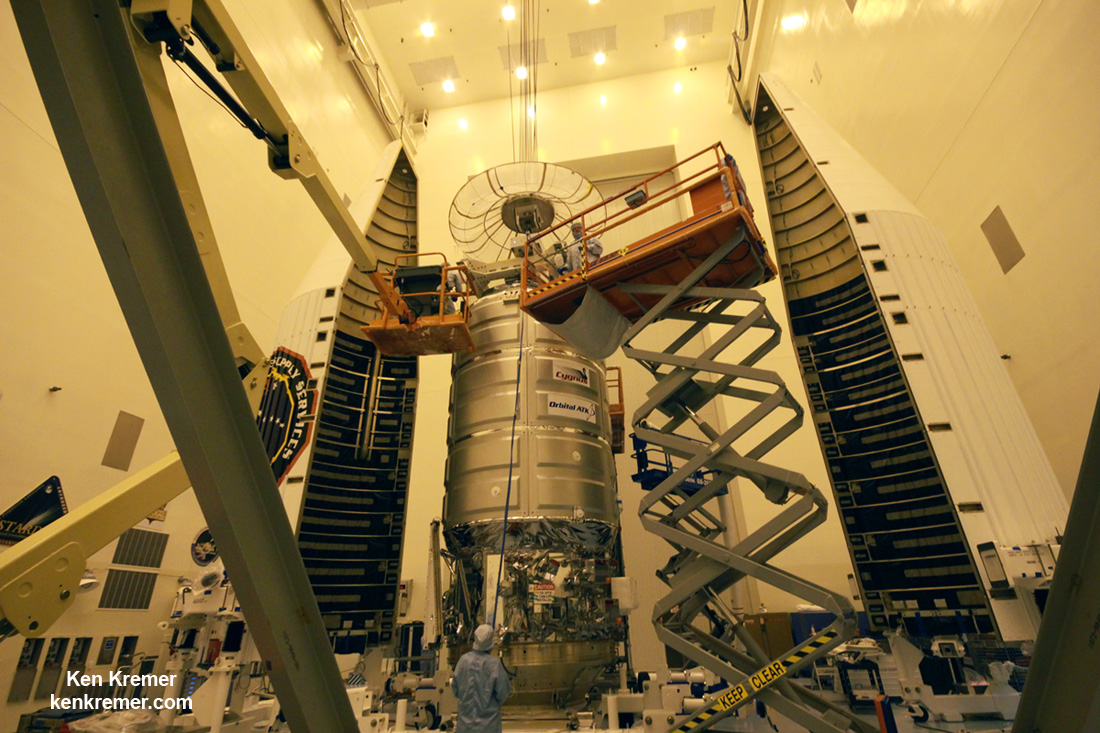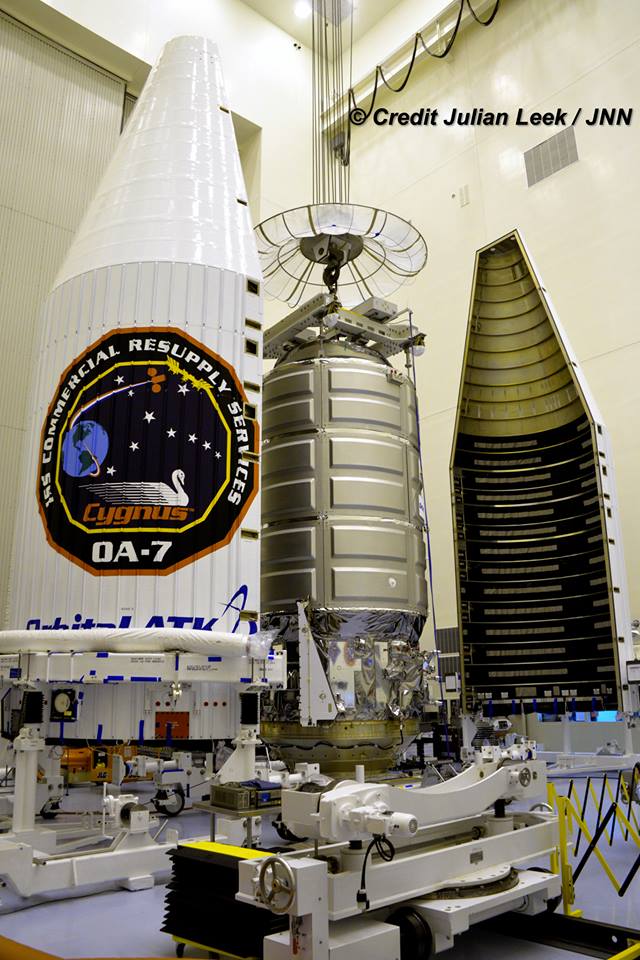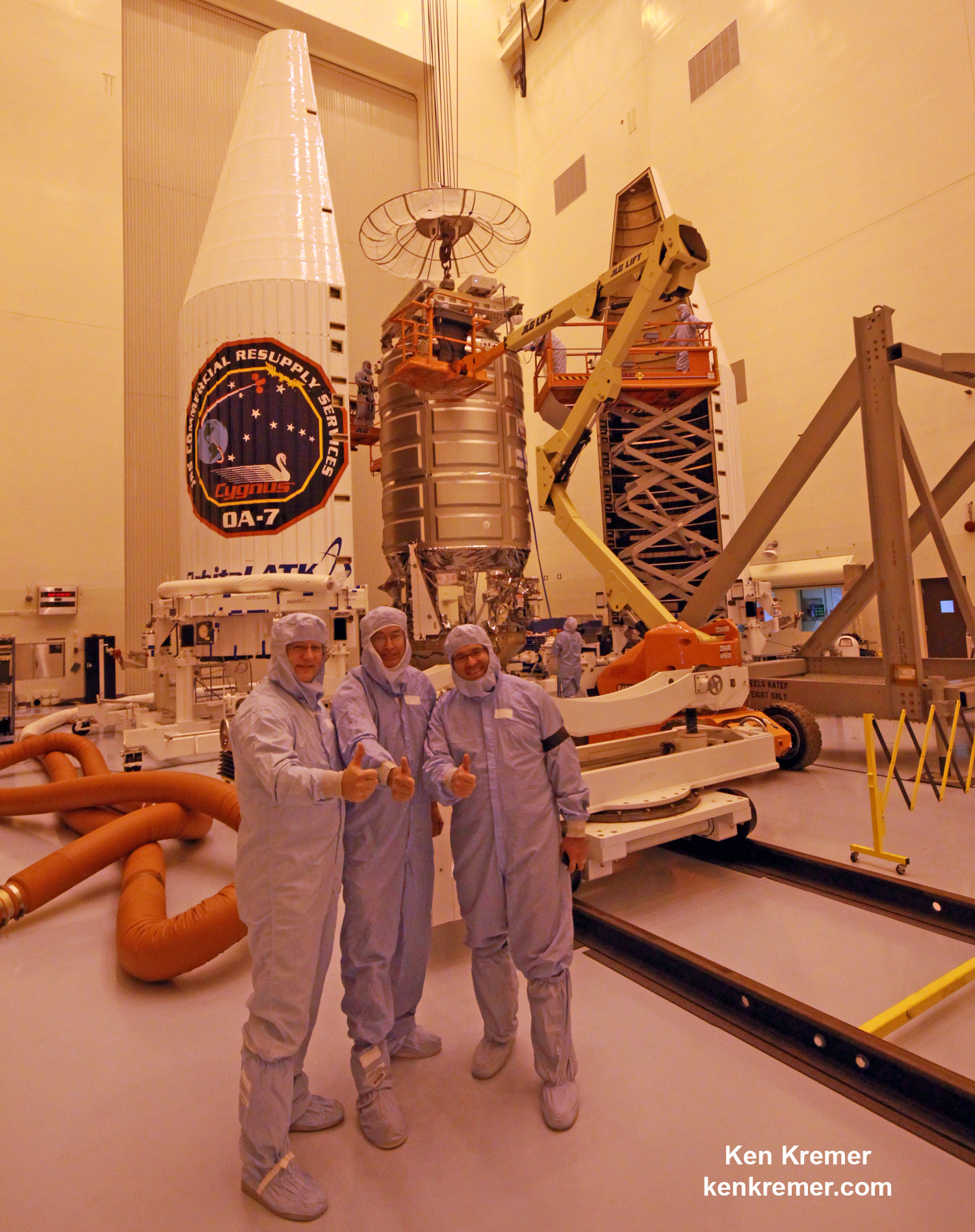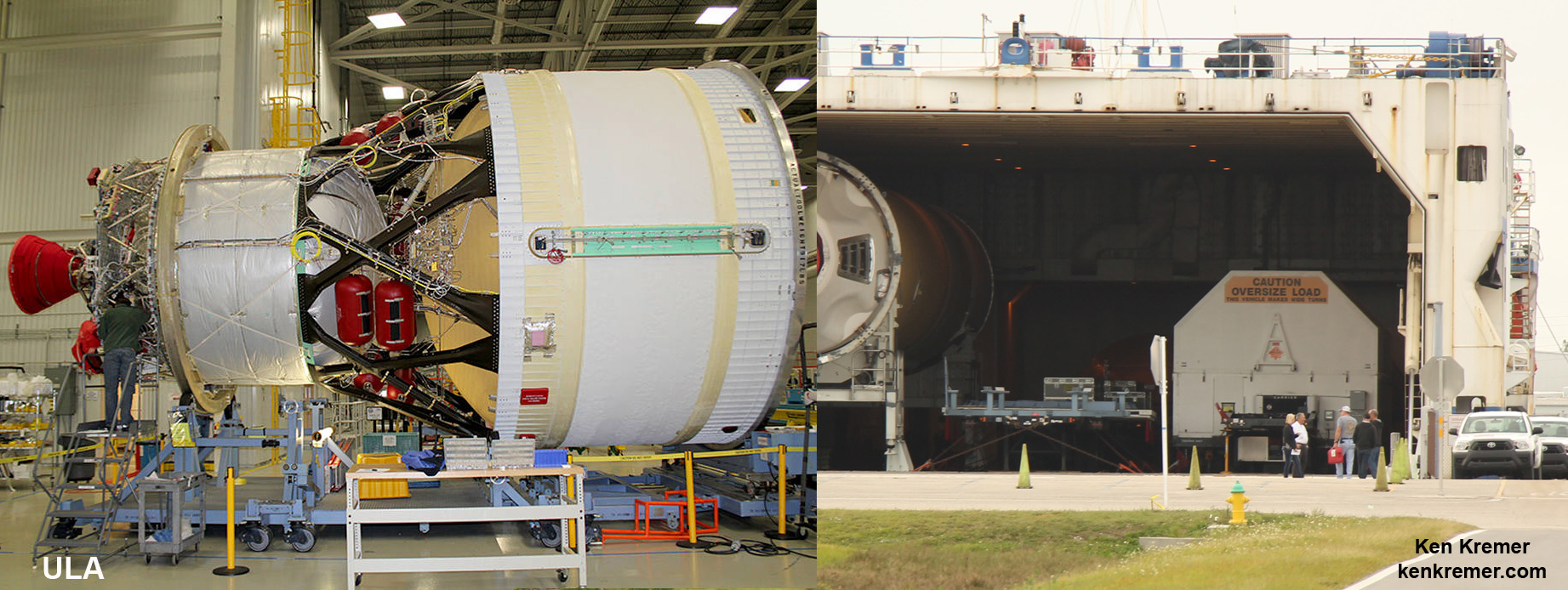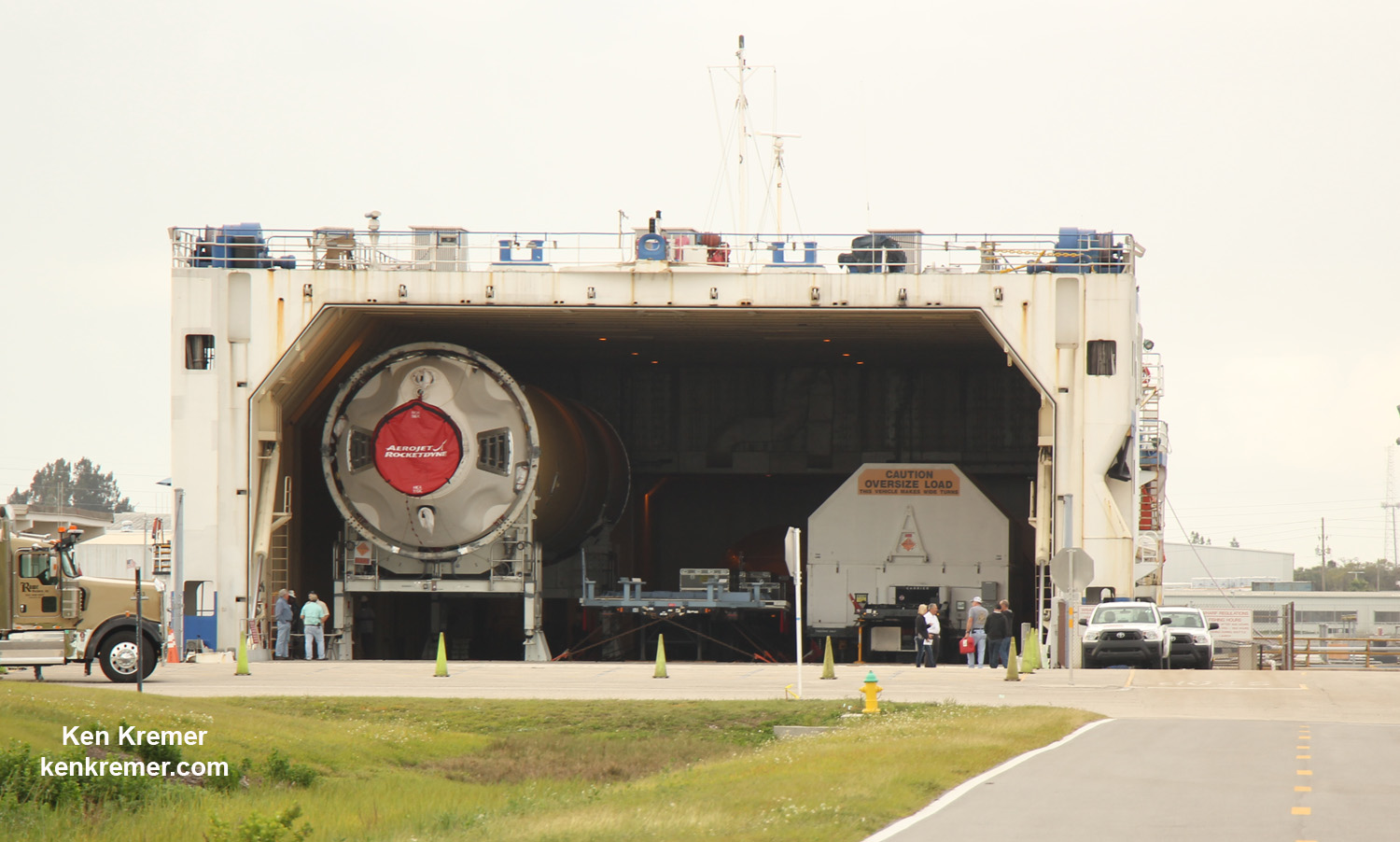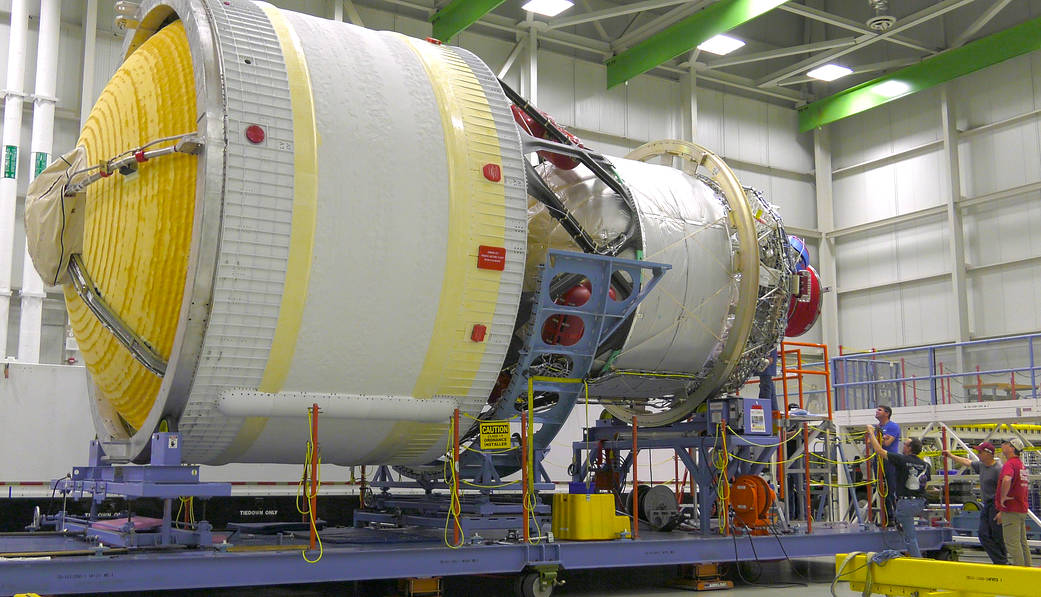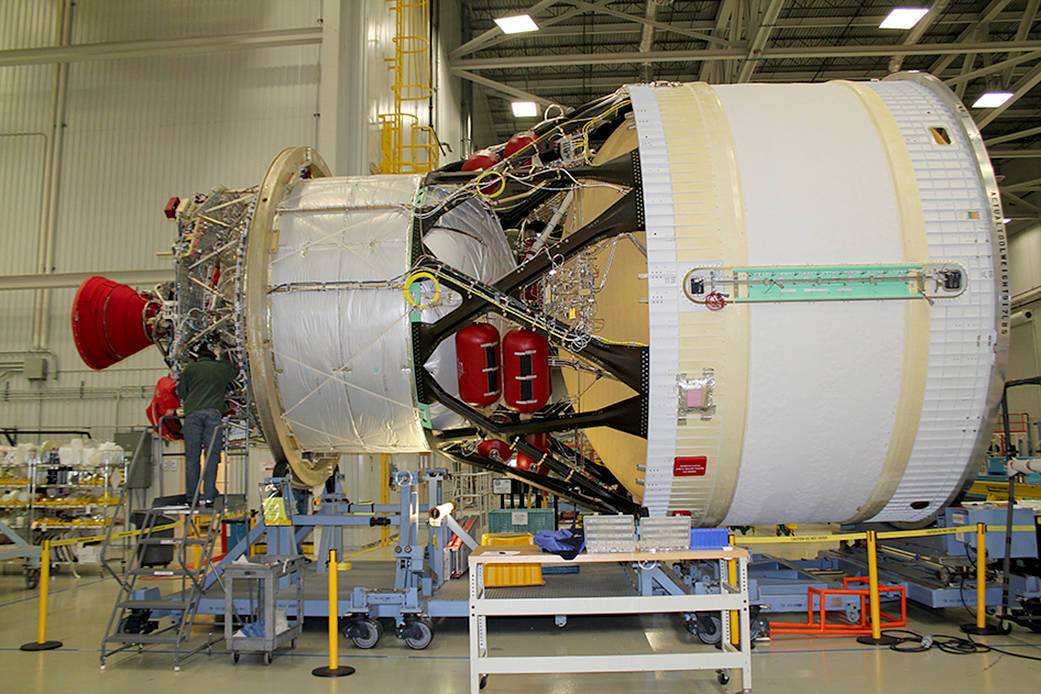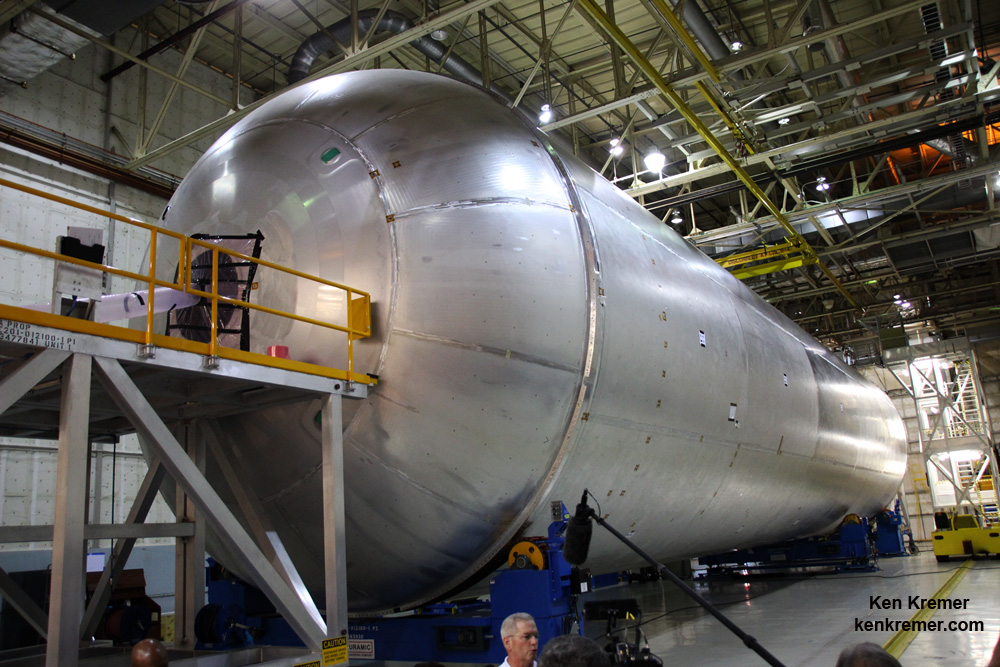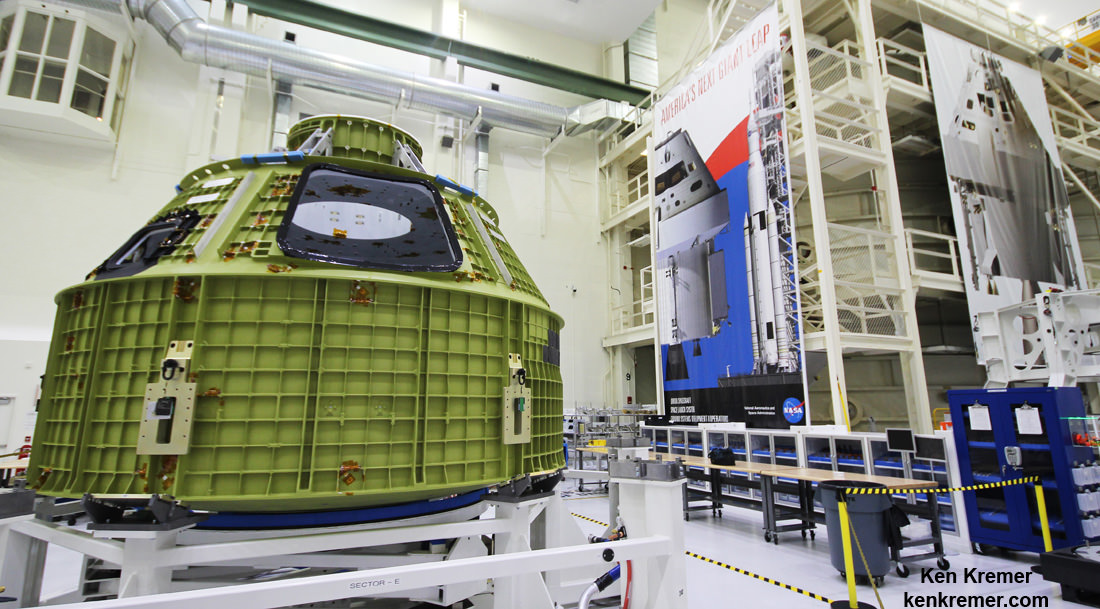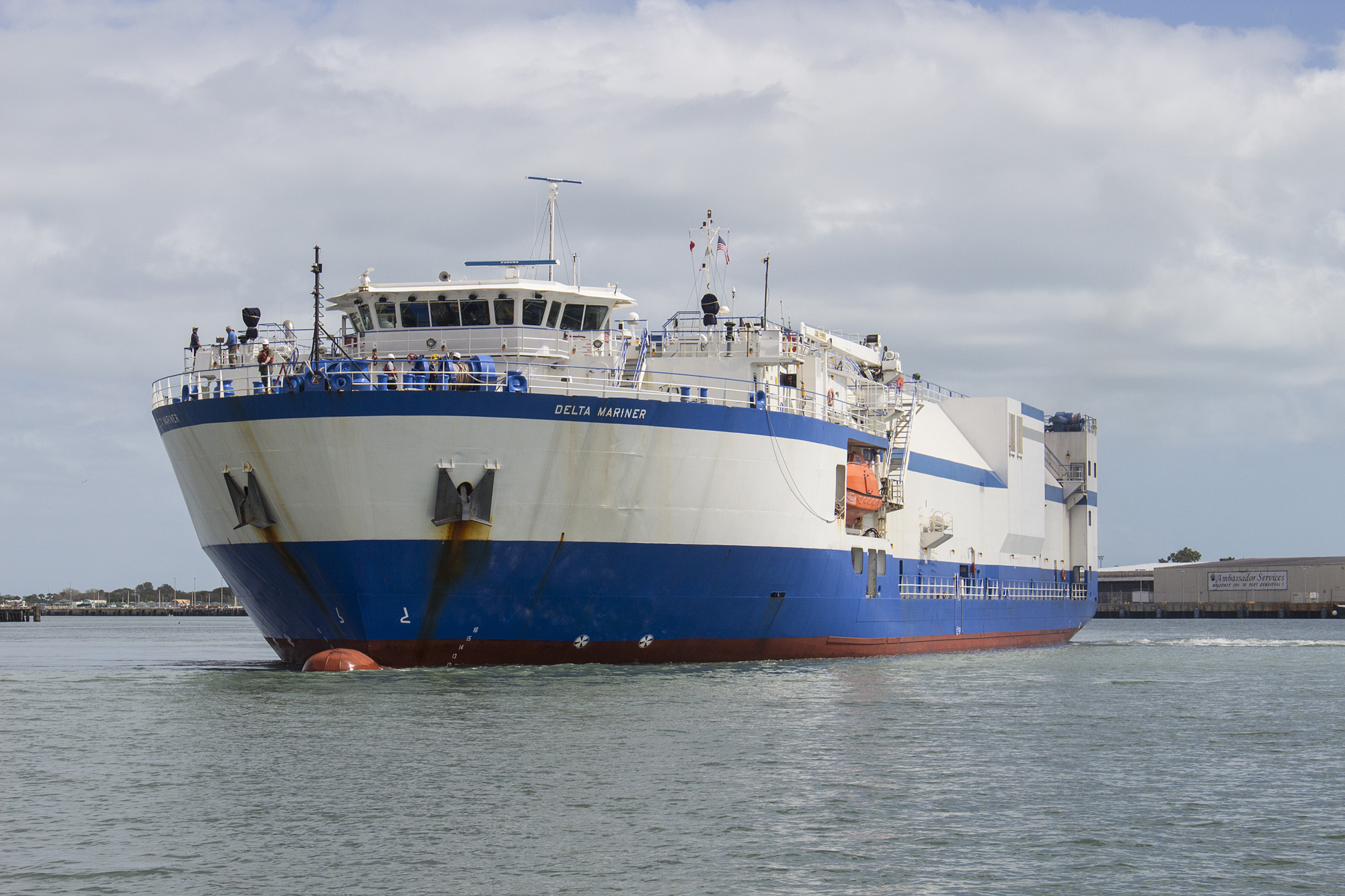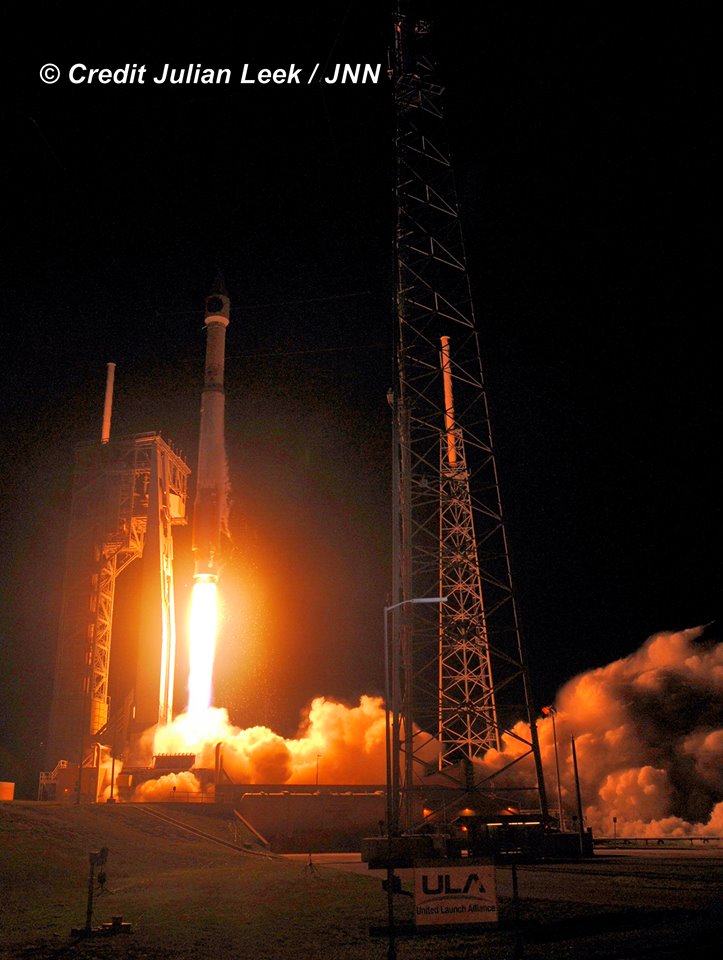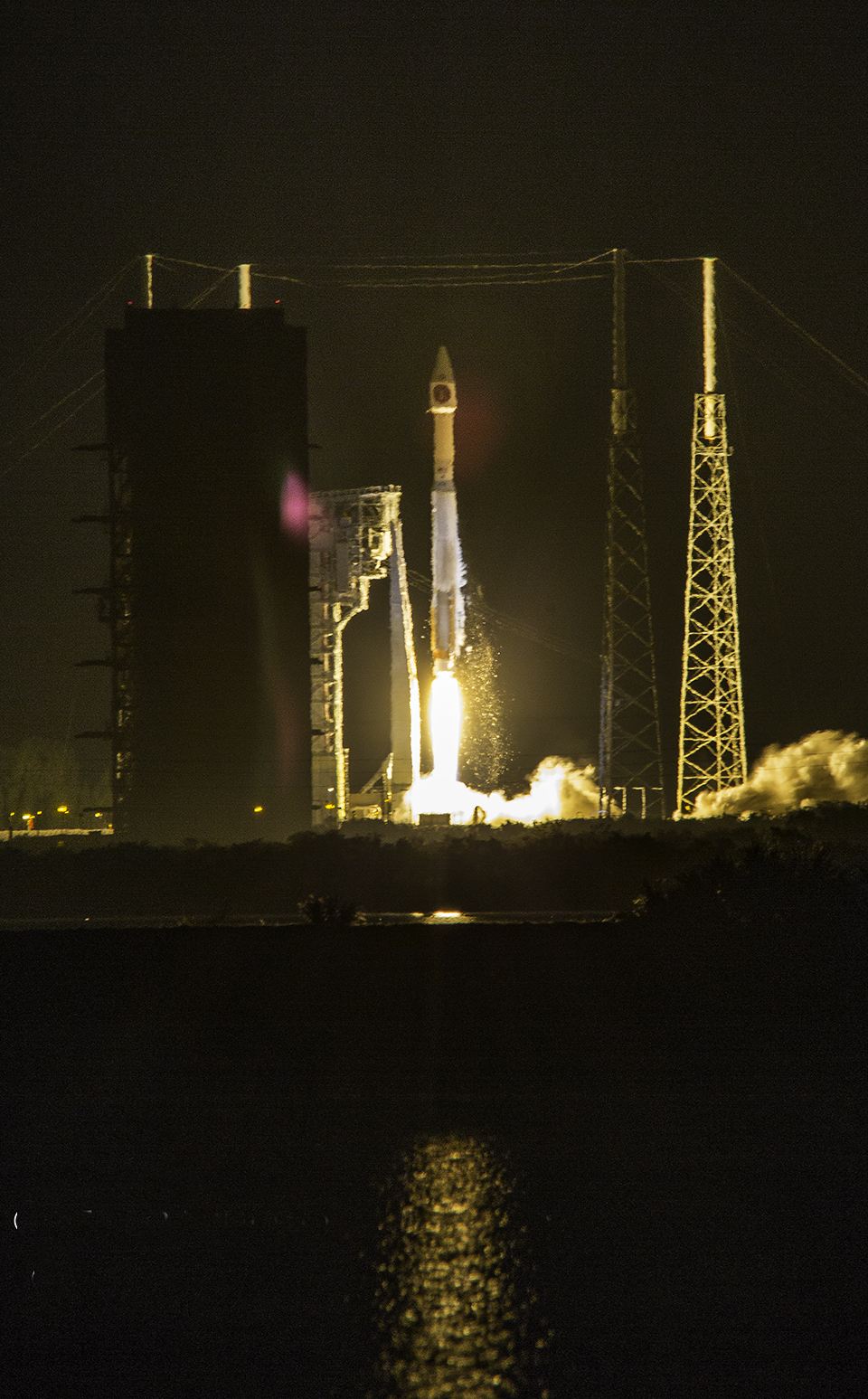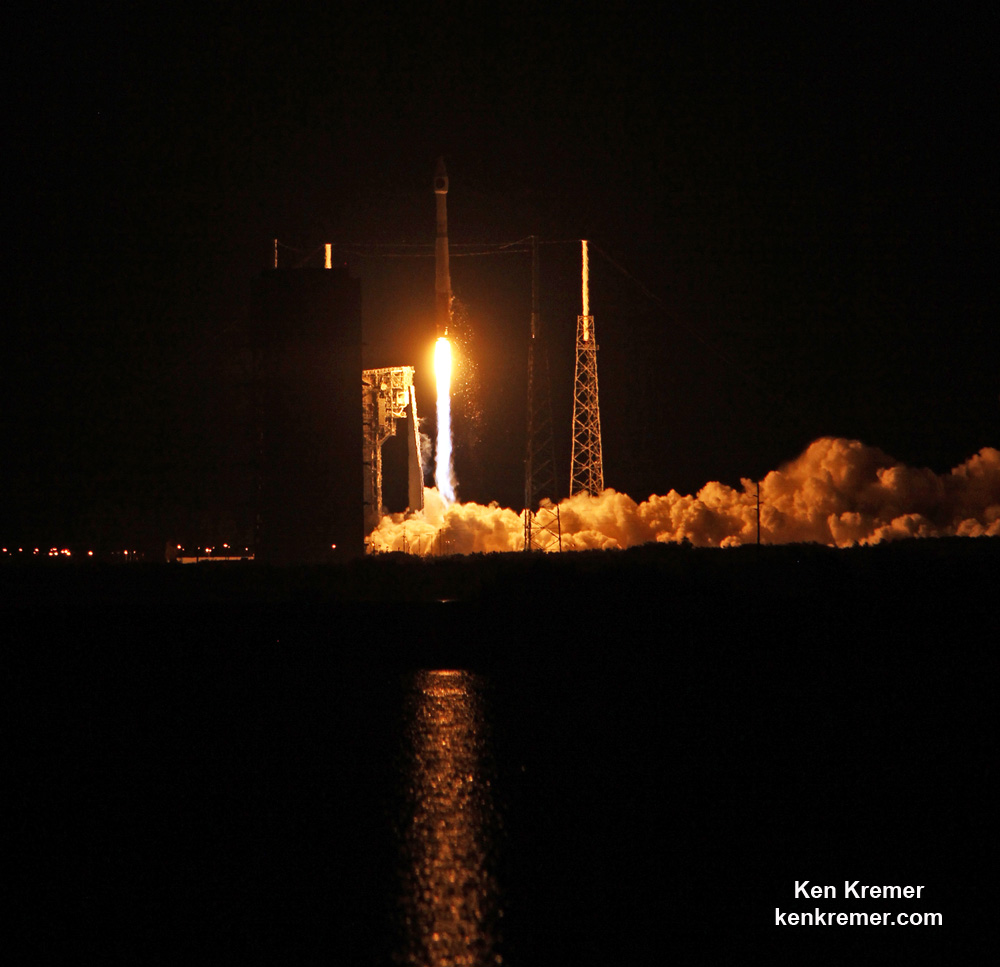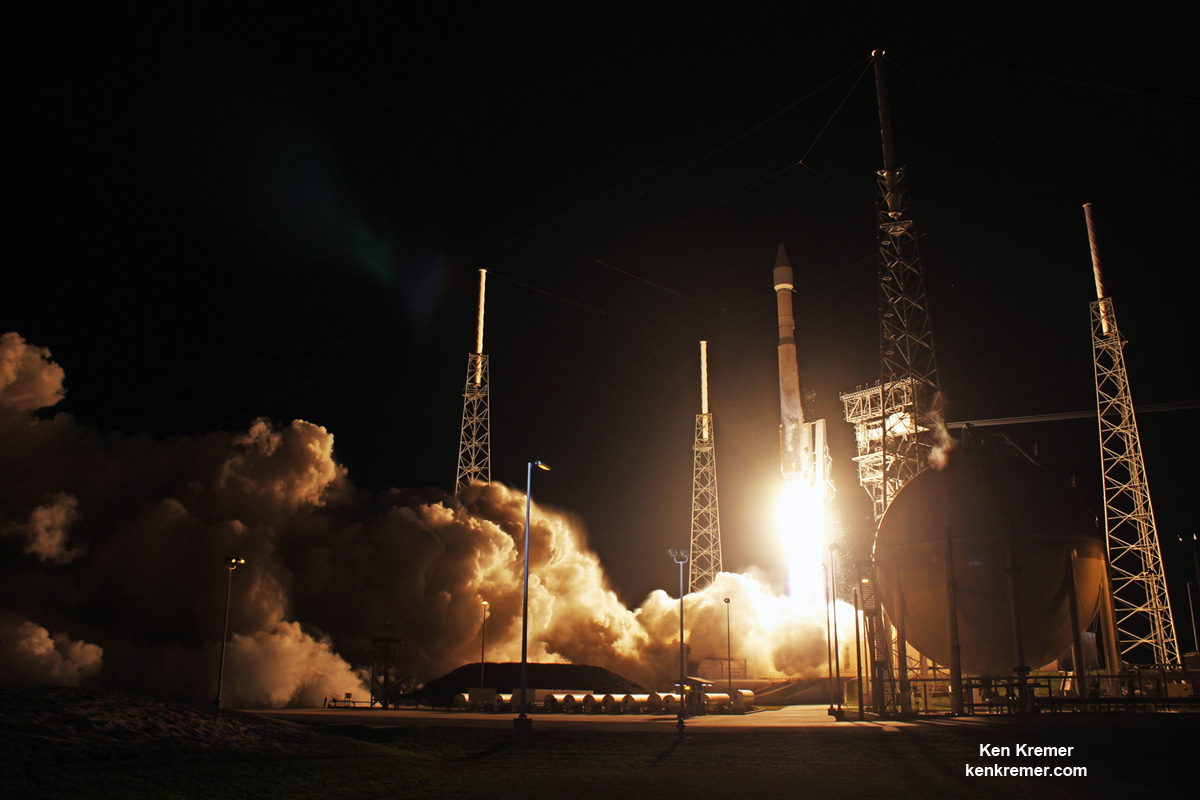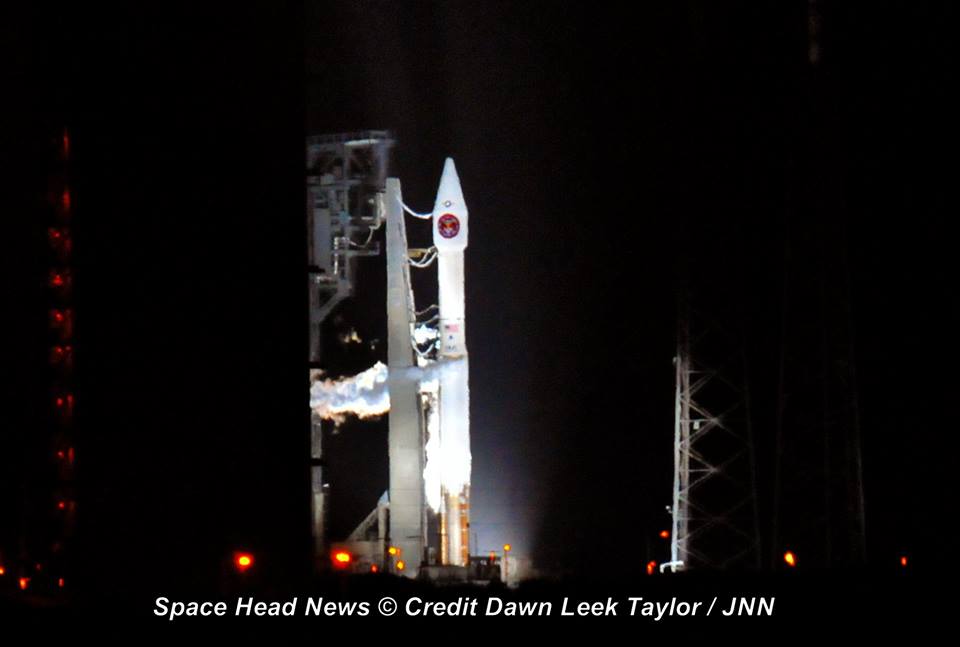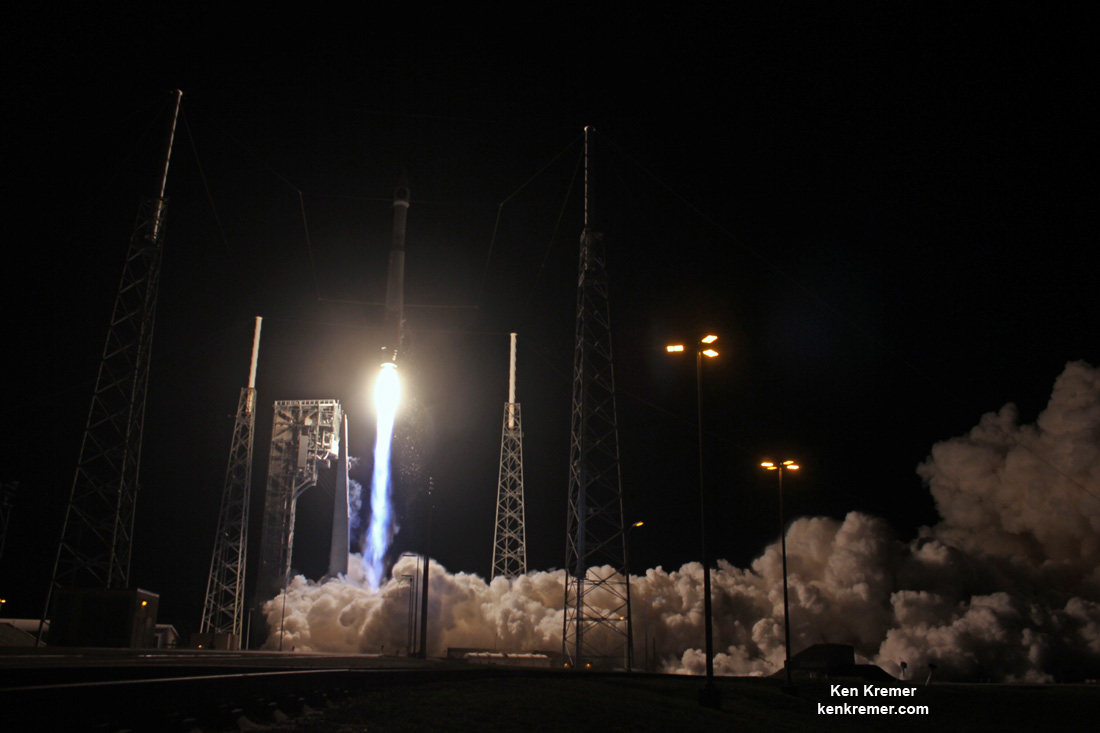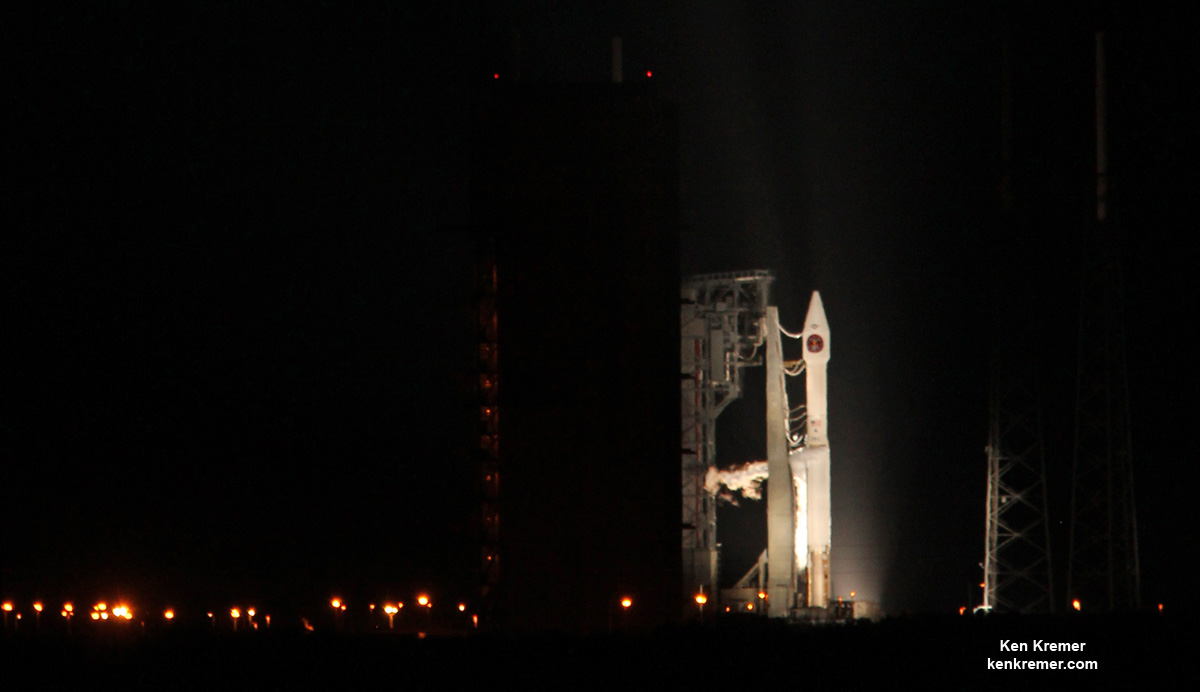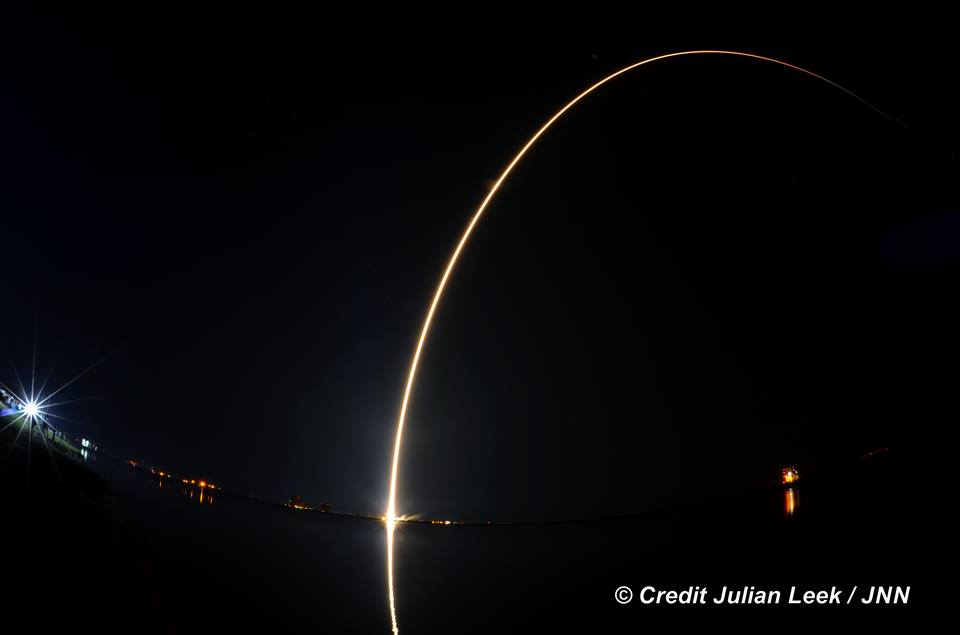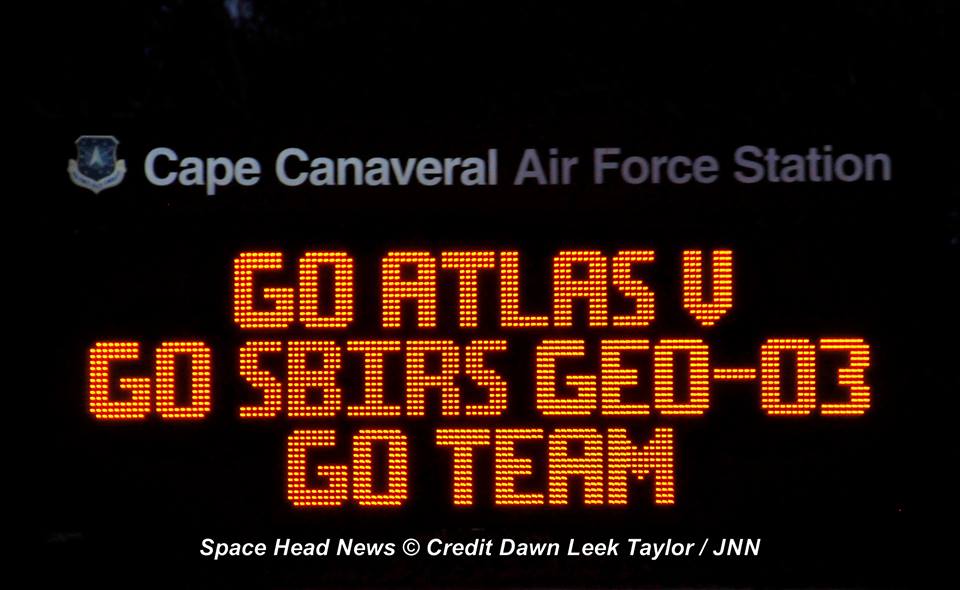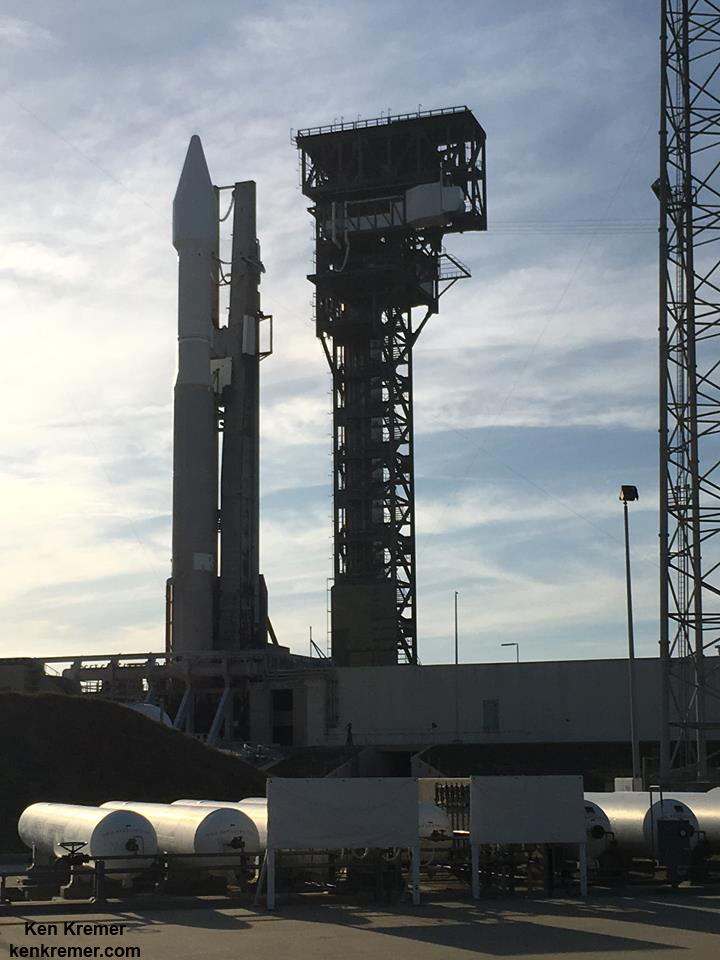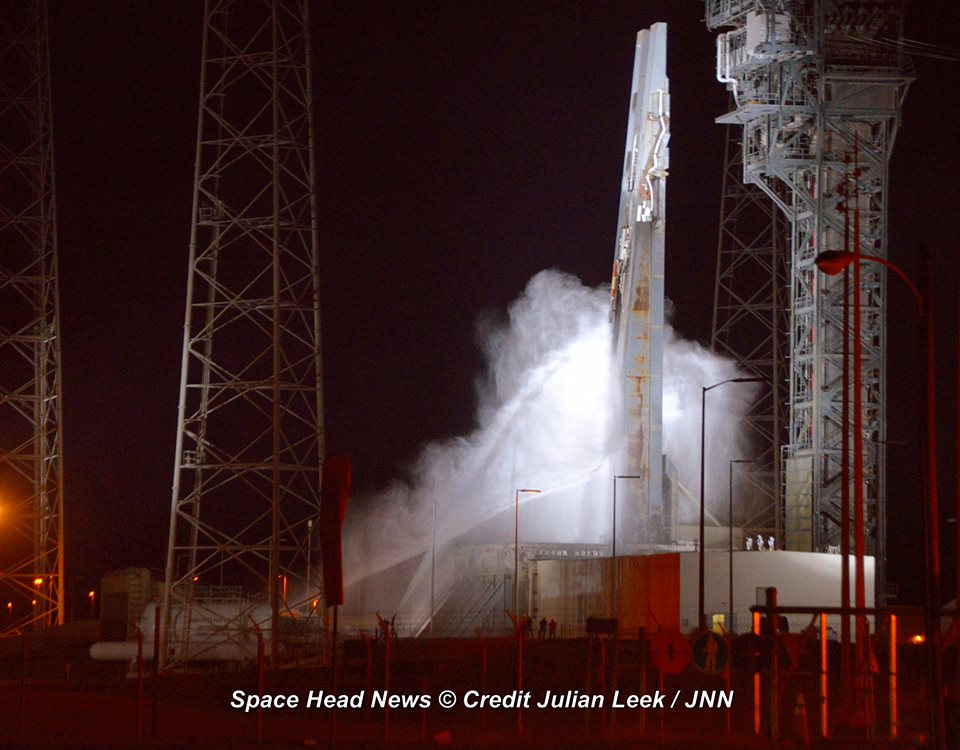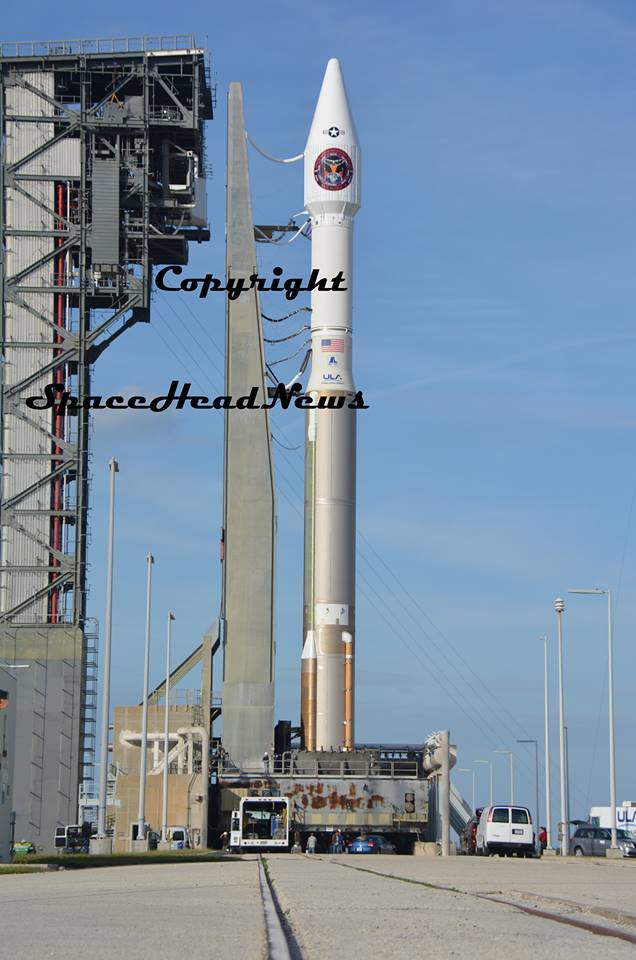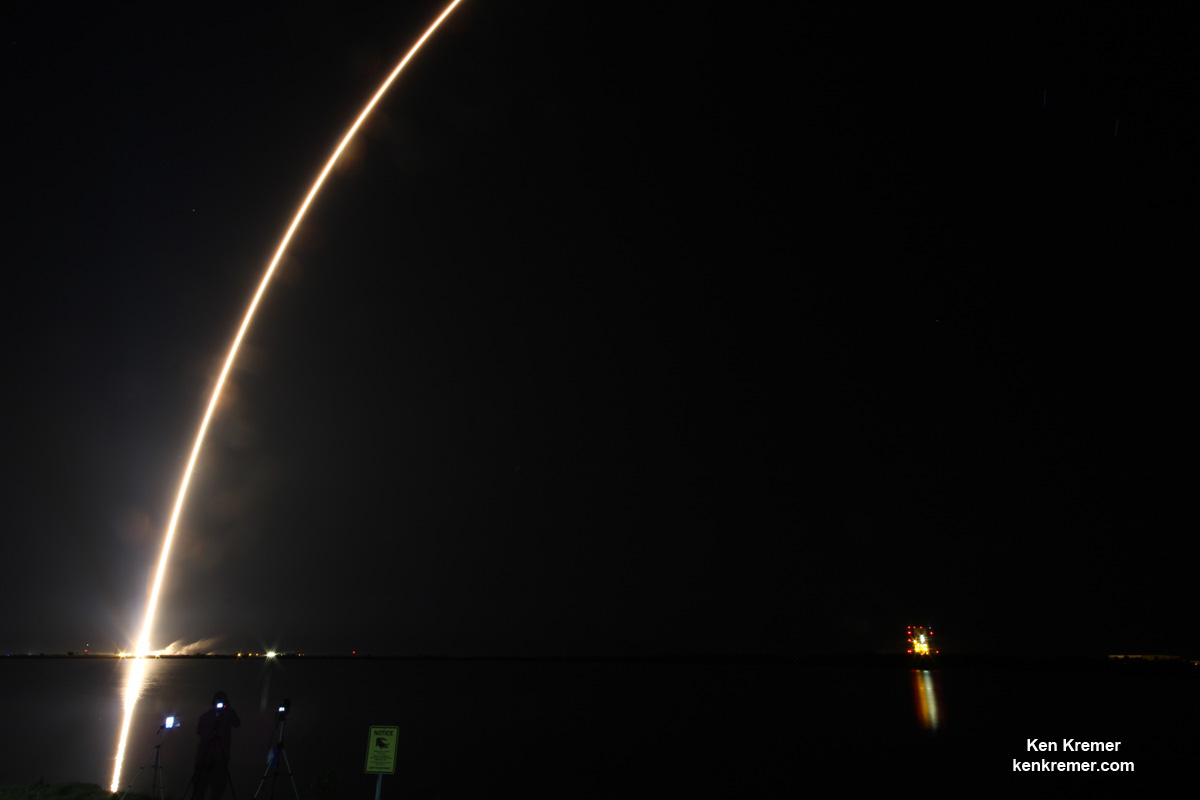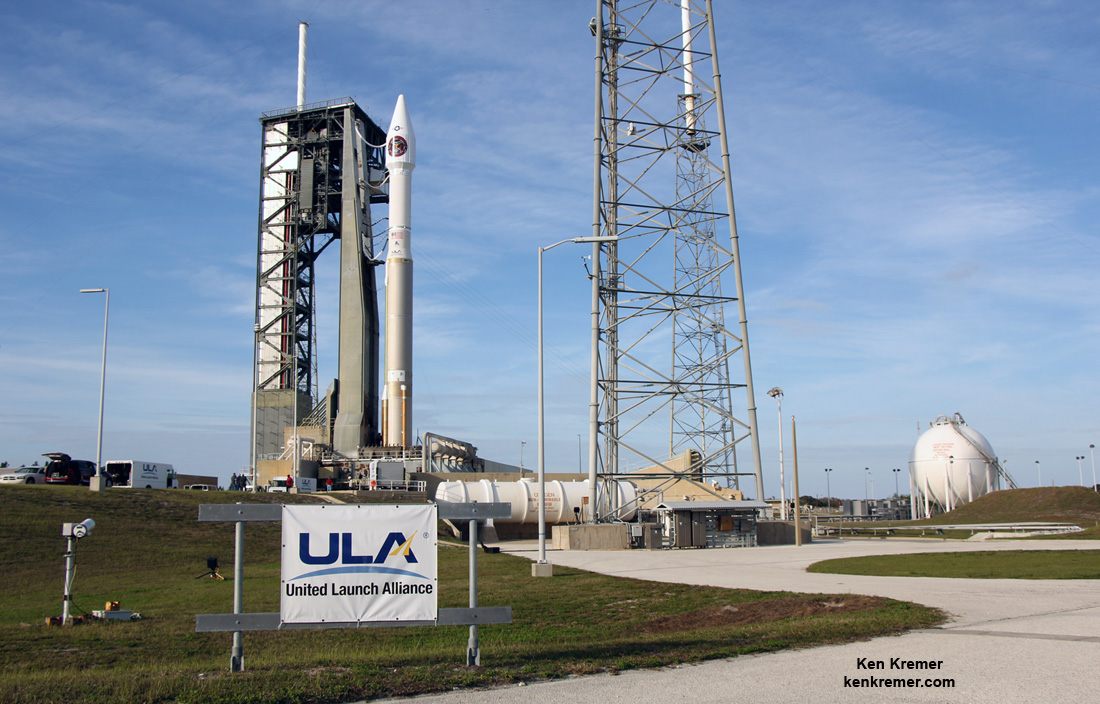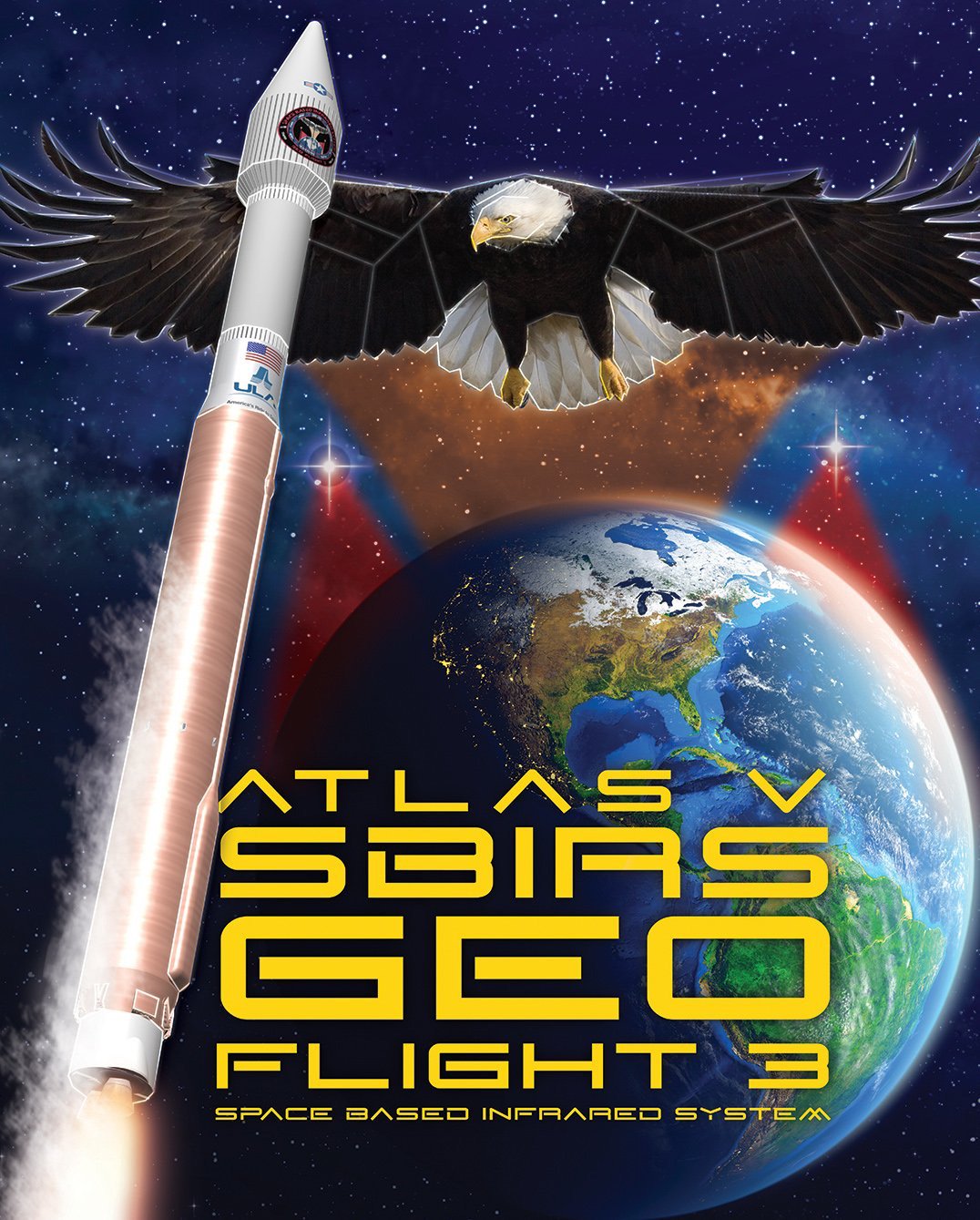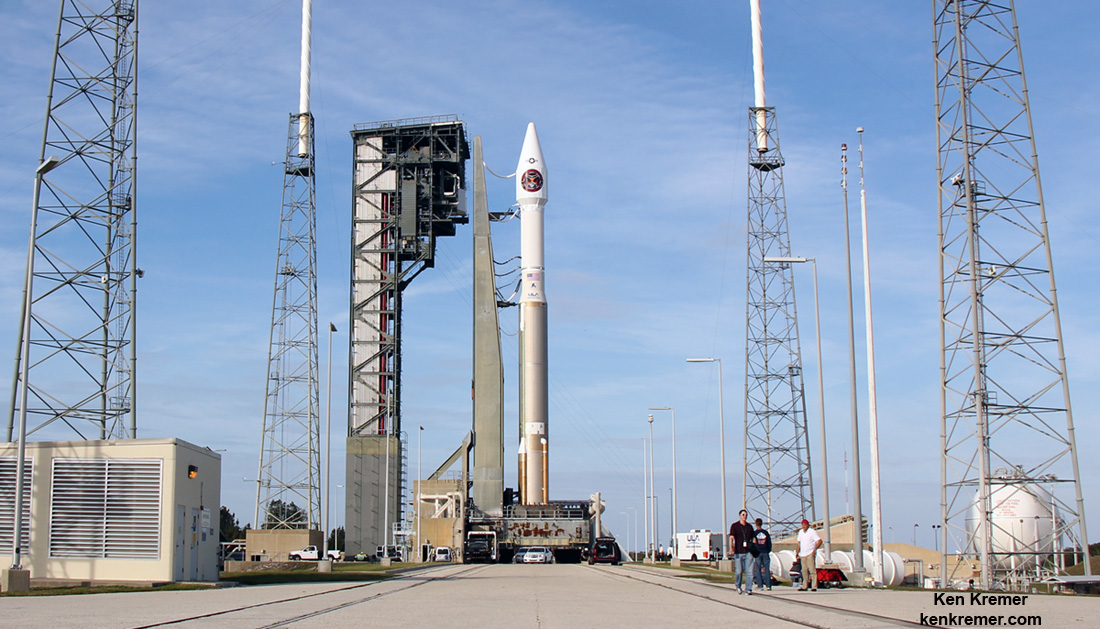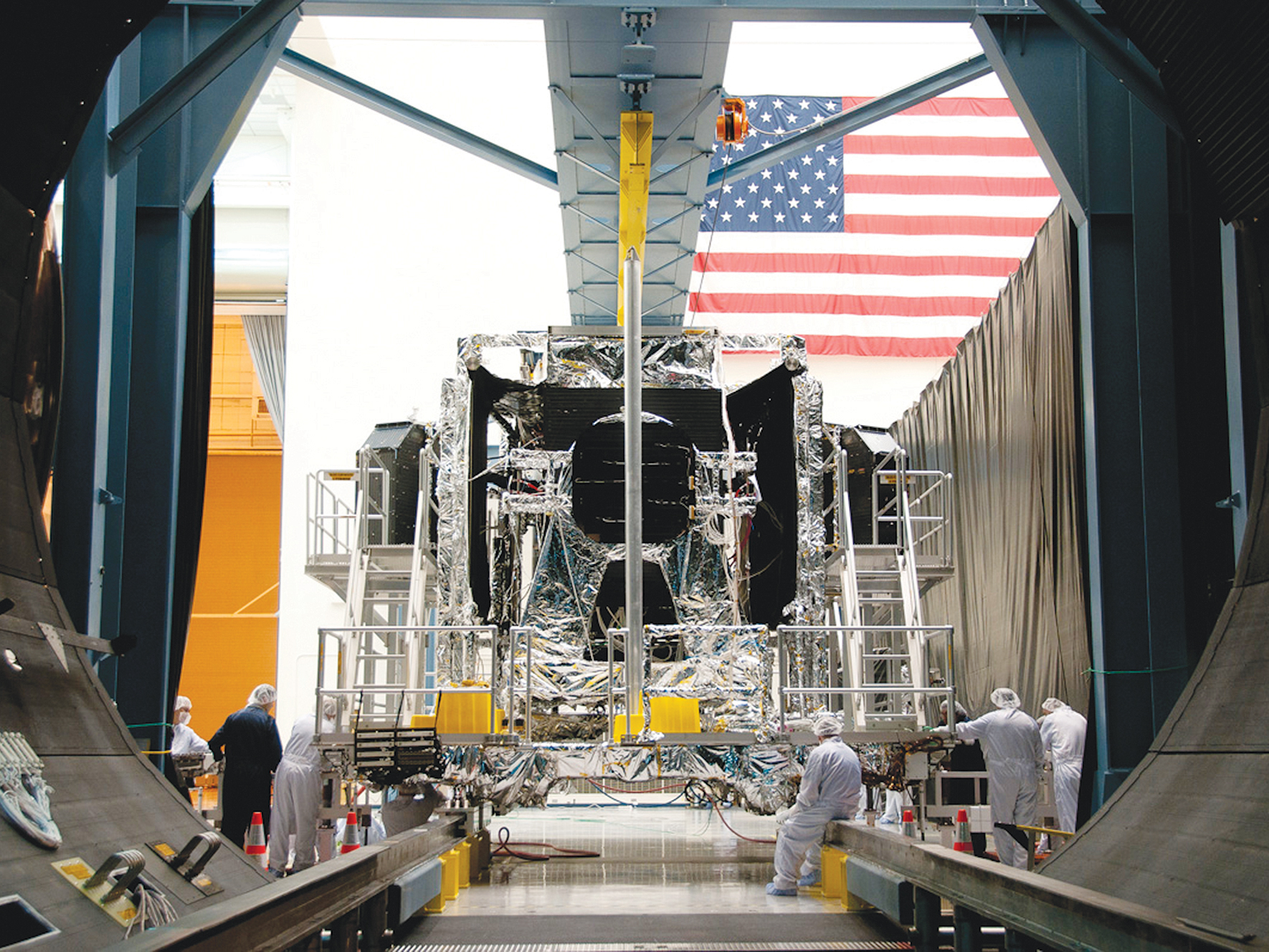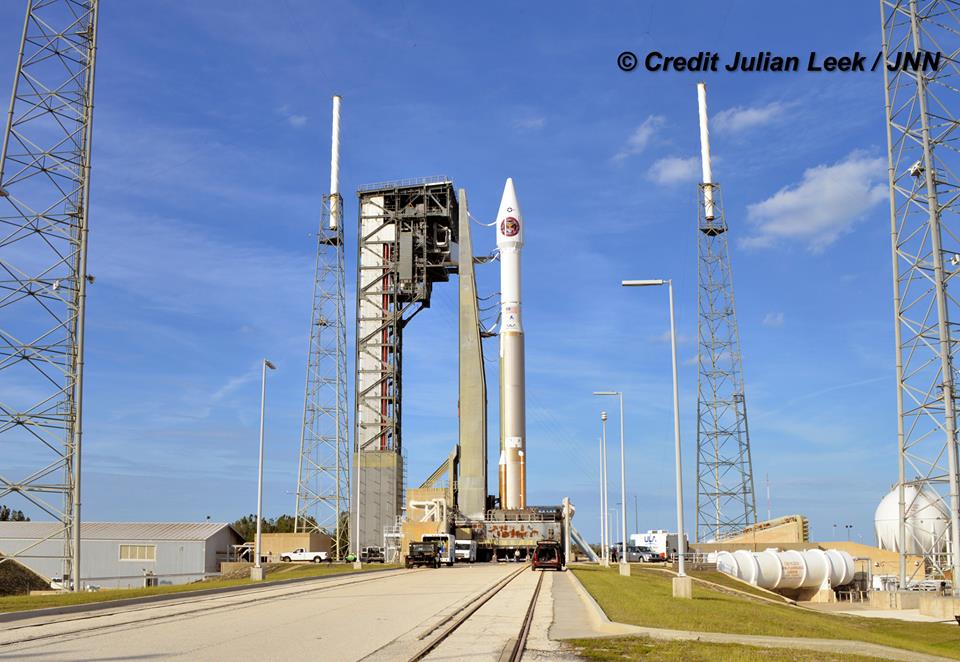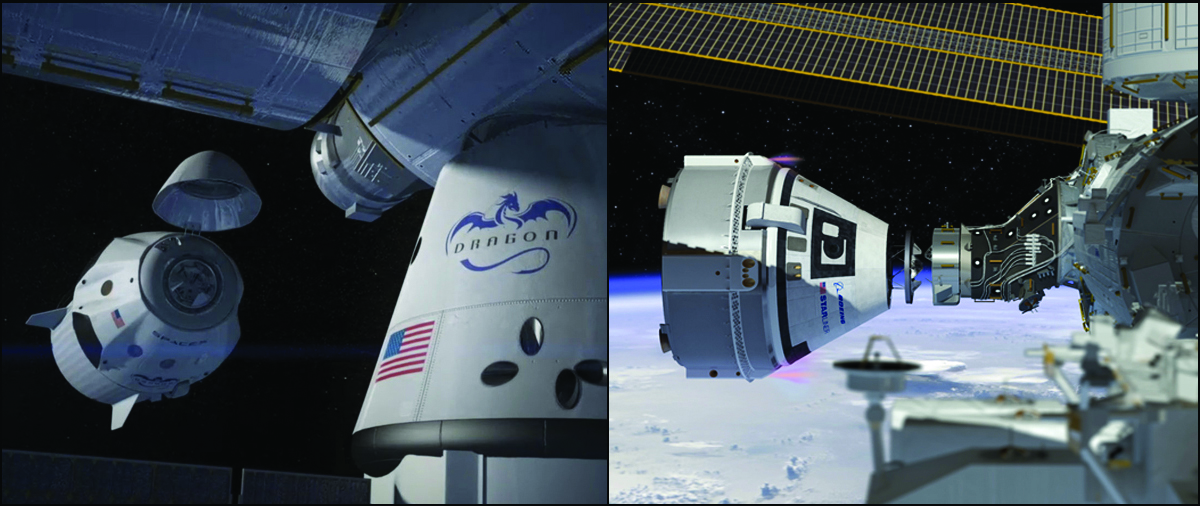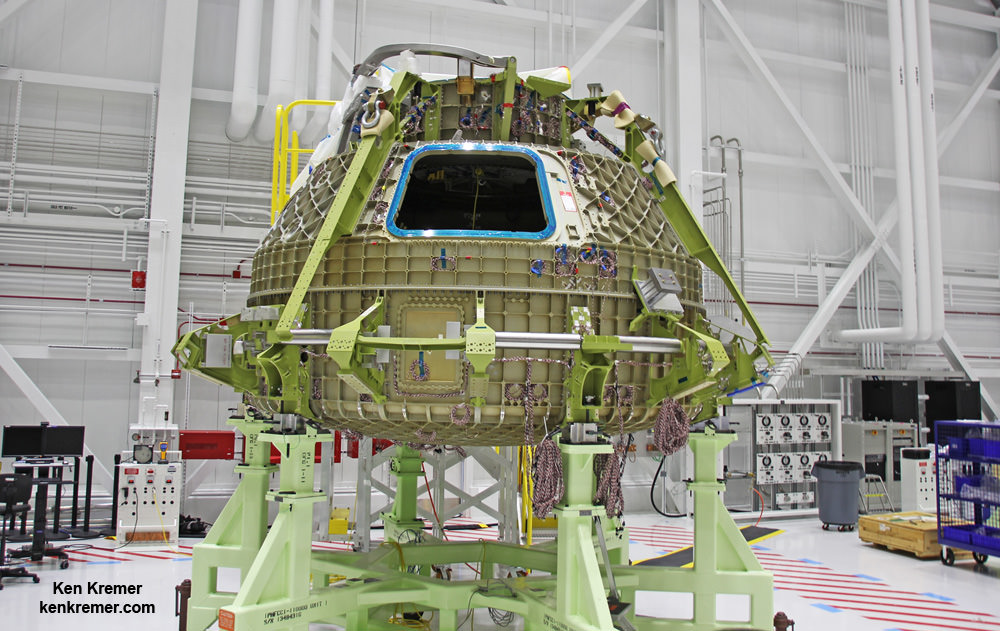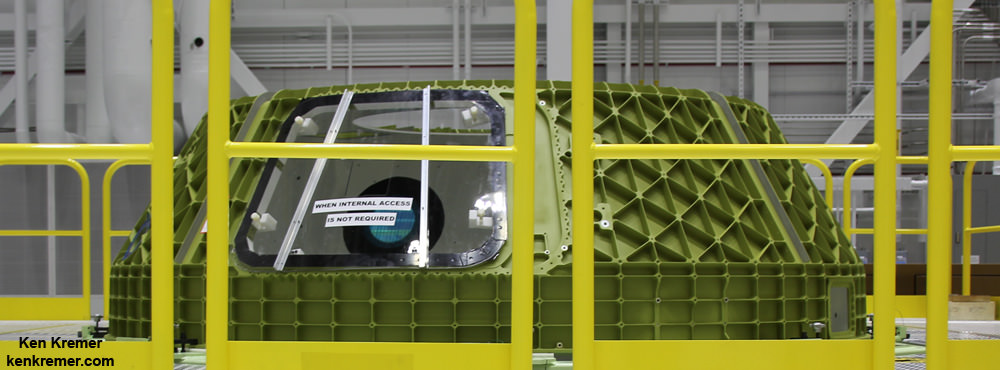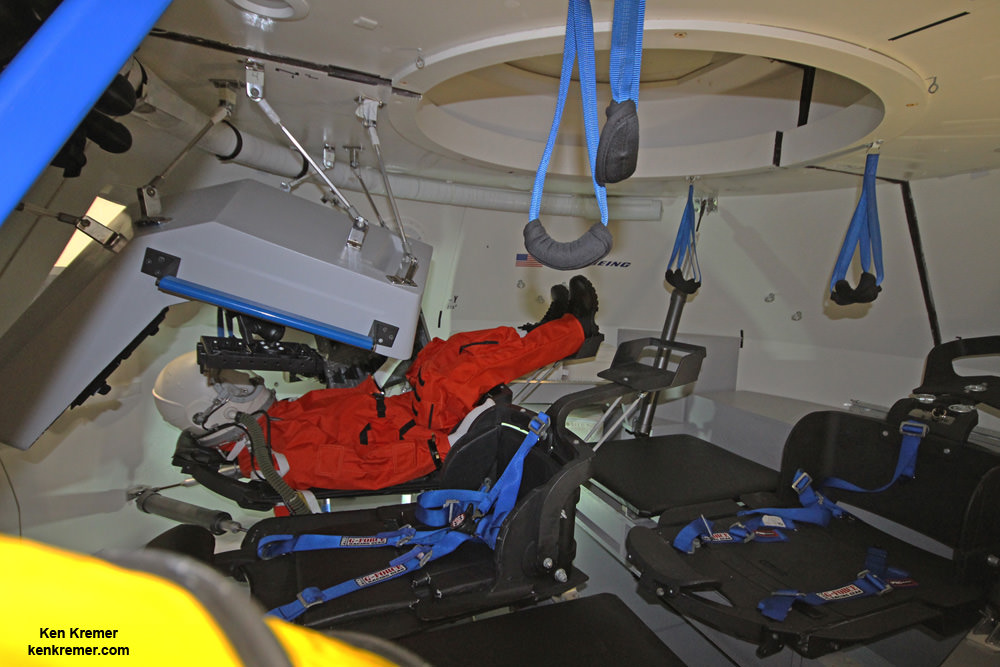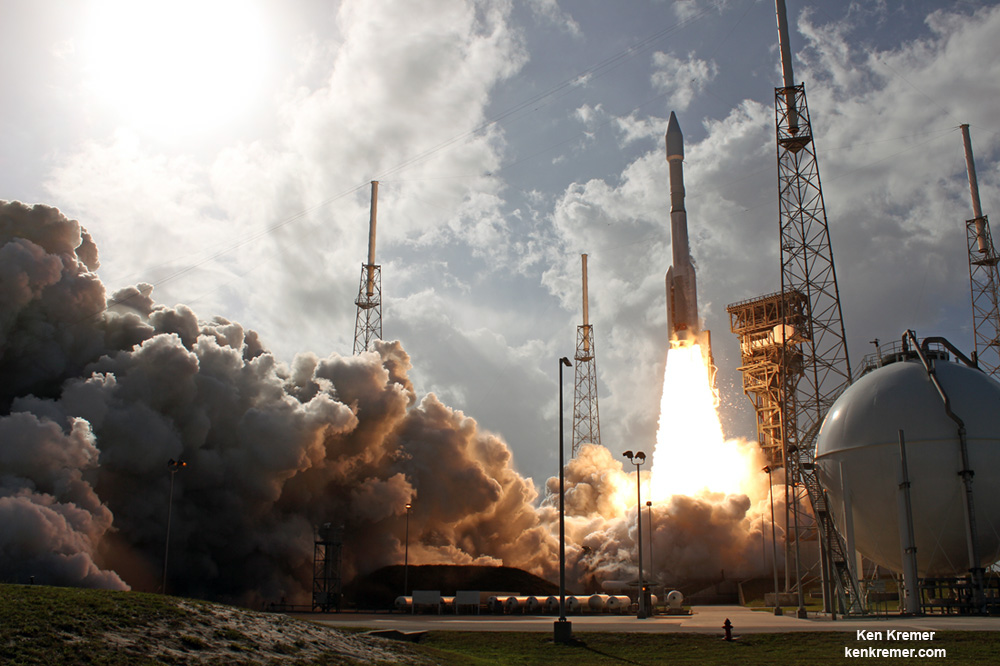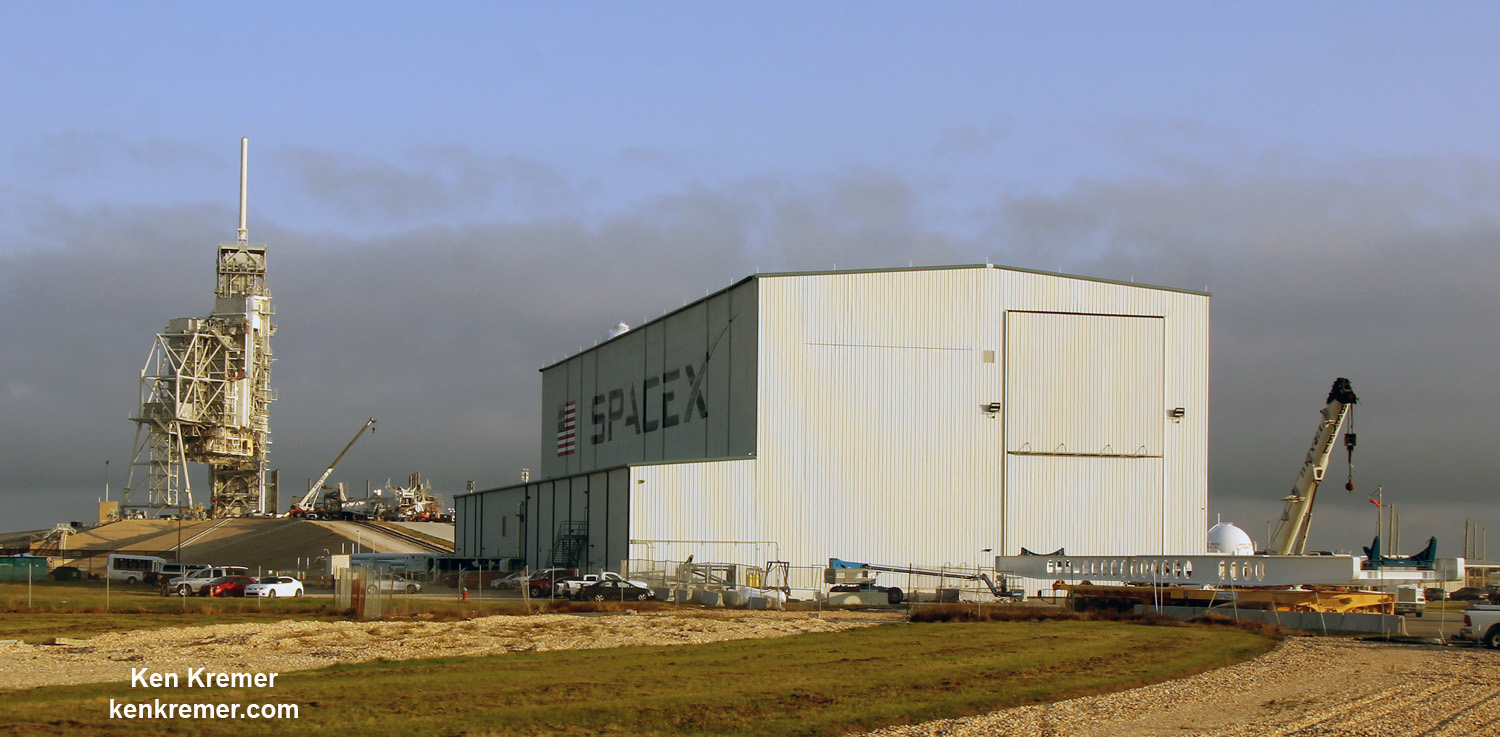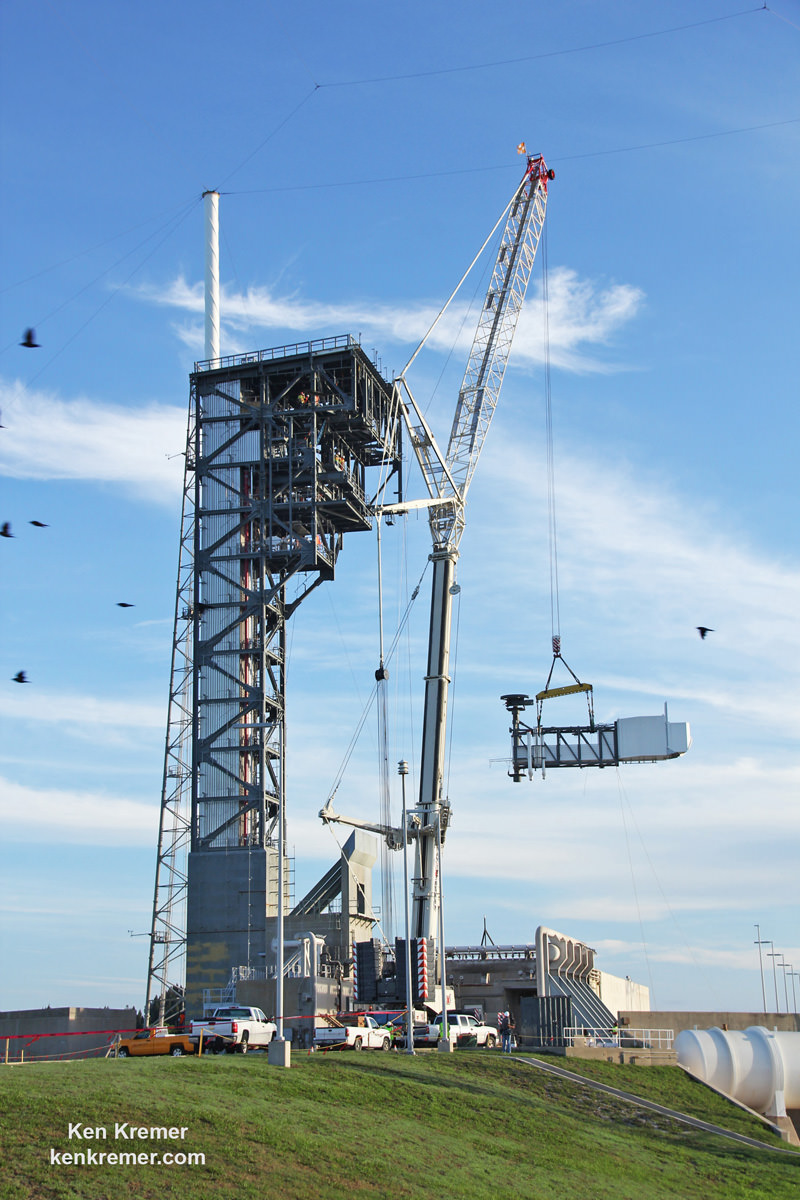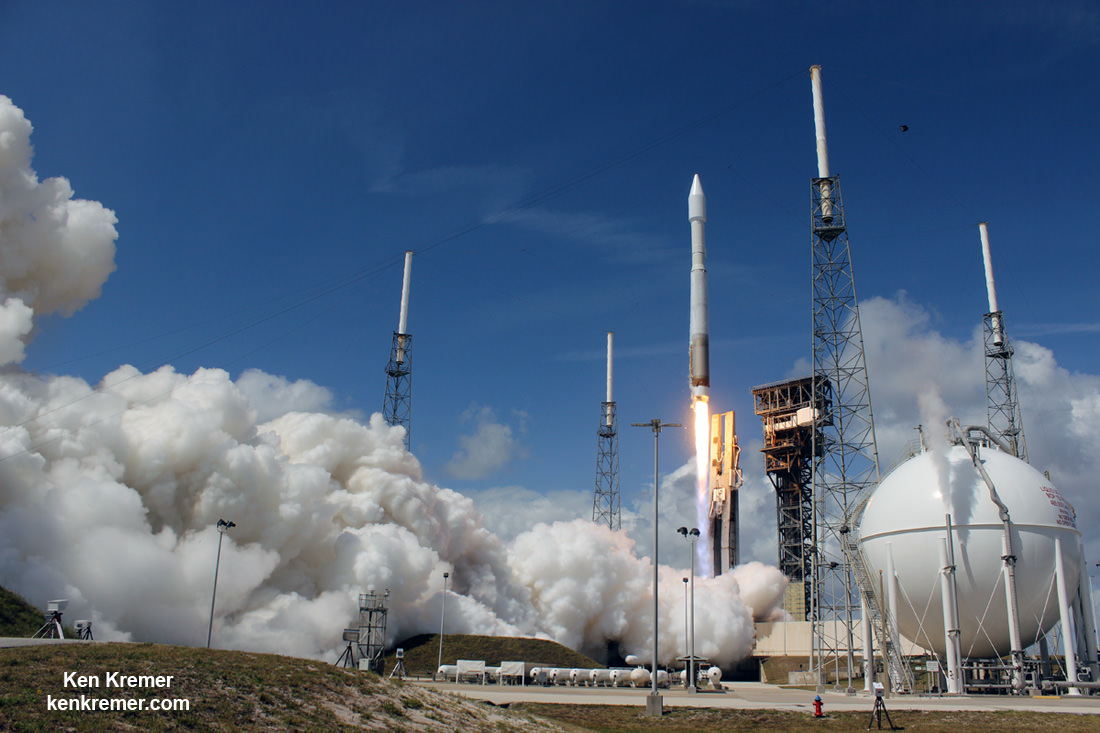
KENNEDY SPACE CENTER, FL – Orbital ATK’s Cygnus supply ship soared to space from the Florida Space Coast at lunchtime today, Tuesday, April 18, drenched in sunshine and carrying the ‘SS John Glenn’ loaded with over three and a half tons of precious cargo – bound for the multinational crew residing aboard the International Space Station (ISS).
Just like clockwork, Orbital ATK’s seventh cargo delivery flight to the station launched right on time at 11:11 a.m. EDT Tuesday at the opening of the launch window atop a United Launch Alliance Atlas V rocket from Space Launch Complex 41 on Cape Canaveral Air Force Station in Florida.
The ‘SS John Glenn’ Cygnus resupply spacecraft was manufactured by NASA commercial cargo provider Orbital ATK. The vehicle is also known alternatively as the Cygnus OA-7 or CRS-7 mission.
“This was a great launch,” said Joel Montalbano, NASA’s deputy manager of the International Space Station program, at the post launch media briefing at NASA’s Kennedy Space Center.
‘We have a vehicle on its way to the ISS.”
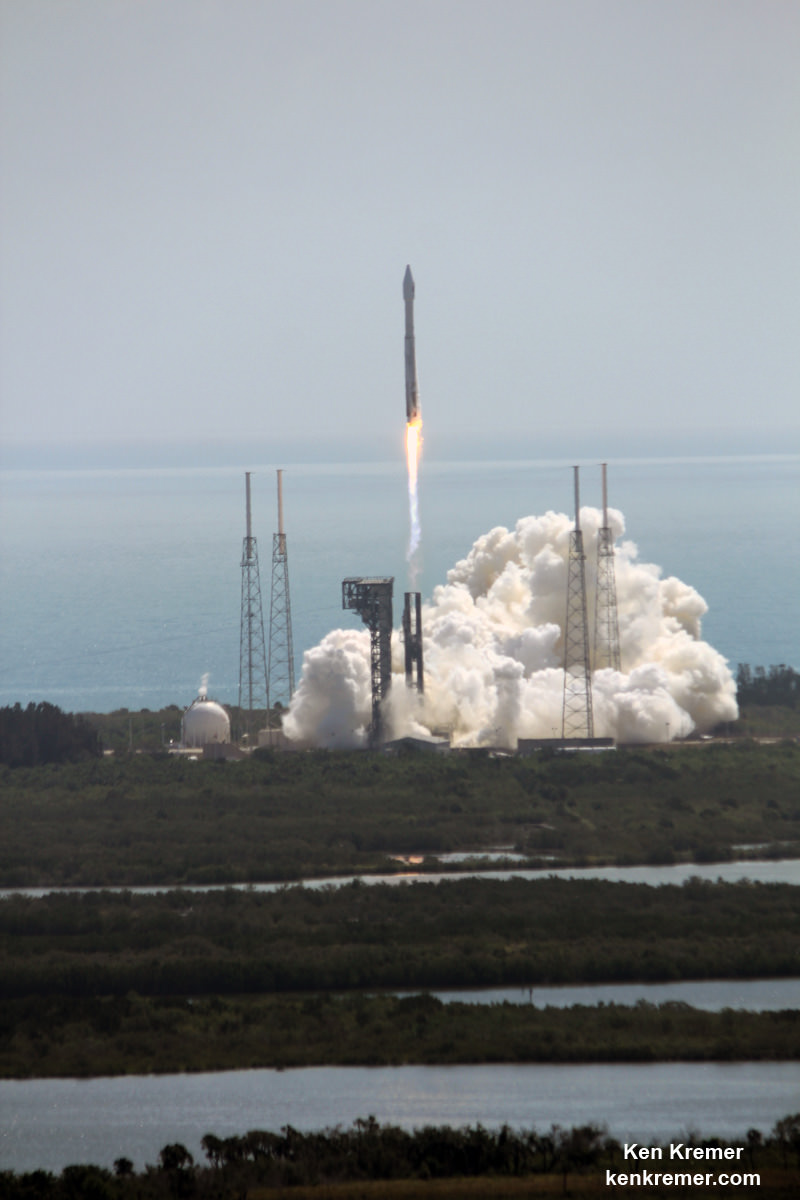
Huge crowds gathered at public viewing areas ringing Cape Canaveral and offering spectacular views from Playalinda Beach to the north, the inland waterway and more beautiful space coast beaches to the south.
Near perfect weather conditions and extended views of the rocket roaring to orbit greeted all those lucky enough to be on hand for what amounts to a sentimental third journey to space for American icon John Glenn.
The launch was carried live on NASA TV with extended expert commentary. Indeed this launch coverage was the final one hosted by NASA commentator George Diller- the longtime and familiar ‘Voice of NASA’ – who is retiring from NASA on May 31.
The serene sky blue skies with calm winds and moderate temperatures were punctuated with wispy clouds making for a thrilling spectacle as the rocket accelerated northeast up the US East Coast on a carefully choreographed trajectory to the massive orbiting outpost.
“The status of the spacecraft is great!” said Frank Culbertson, a former shuttle and station astronaut and now Orbital ATK’s Space Systems Group president.

The mission is named the ‘S.S. John Glenn’ in tribute to legendary NASA astronaut John Glenn – the first American to orbit Earth back in February 1962.
Glenn was one of the original Mercury Seven astronauts selected by NASA. At age 77 he later flew a second mission to space aboard Space Shuttle Discovery- further cementing his status as a true American hero.
Glenn passed away in December 2016 at age 95. He also served four terms as a U.S. Senator from Ohio.
A picture of John Glenn in his shuttle flight suit and a few mementos are aboard.
After a four day orbital chase Cygnus will arrive in the vicinity of the station on Saturday, April 22.
“It will be captured at about 6 a.m. EDT Saturday,” Montalbano elaborated.
Expedition 51 astronauts Thomas Pesquet of ESA (European Space Agency) and Peggy Whitson of NASA will use the space station’s Canadian-built robotic arm to grapple Cygnus, about 6:05 a.m. Saturday.
They will use the arm to maneuver and berth the unmanned vehicle to the Node-1 Earth-facing nadir port on the Unity module.
Cygnus will remain at the space station for about 85 days until July before its destructive reentry into Earth’s atmosphere, disposing of several thousand pounds of trash.
The countdown for today’s launch of the 194-foot-tall two stage United Launch Alliance (ULA) rocket began when the rocket was activated around 3 a.m. The rocket was tested during a seven-hour long countdown.
This is the third Cygnus to launch on an Atlas V rocket from the Cape. The last one launched a year ago on March 24, 2016 during the OA-6 mission. The first one launched in December 2015 during the OA-4 mission. Each Cygnus is named after a deceased NASA astronaut.
“We’re building the bridge to history with these missions,” said Vernon Thorp, ULA’s program manager for Commercial Missions. “Every mission is fantastic and every mission is unique. At the end of the day every one of these missions is critical.”
“The Atlas V performed beautifully,” said Thorpe at the post launch briefing.
The other Cygnus spacecraft have launched on the Orbital ATK commercial Antares rocket from NASA Wallops Flight Facility on Virginia’s eastern shore.
Cygnus OA-7 is loaded with 3459 kg (7626 pounds) of science experiments and hardware, crew supplies, spare parts, gear and station hardware to the orbital laboratory in support over 250 research experiments being conducted on board by the Expedition 51 and 52 crews. The total volumetric capacity of Cygnus exceeds 27 cubic meters.
The official OA-7 payload manifest includes the following:
TOTAL PRESSURIZED CARGO WITH PACKAGING: 7,442.8 lbs. / 3,376 kg
• Science Investigations 2,072.3 lbs. / 940 kg
• Crew Supplies 2,103.2 lbs. / 954 kg
• Vehicle Hardware 2,678.6 lbs. / 1,215 kg
• Spacewalk Equipment 160.9 lbs. / 73 kg
• Computer Resources 4.4 lbs. / 2 kg
• Russian Hardware 39.7 lbs. / 18 kg
UNPRESSURIZED CARGO (CubeSats) 183 lbs. / 83 kg
The Orbital ATK Cygnus CRS-7 (OA-7) mission launched aboard an Atlas V Evolved Expendable Launch Vehicle (EELV) in the 401 configuration vehicle. This includes a 4-meter-diameter payload fairing in its longest, extra extended configuration (XEPF) to accommodate the enhanced, longer Cygnus variant being used.
“ULA is excited to be a part of the team that delivered such an important payload to astronauts aboard the ISS,” said Gary Wentz, ULA vice president of Human and Commercial Systems, in a statement.
“Not only are we delivering needed supplies as the first launch under our new RapidLaunch™ offering, but we are truly honored to launch a payload dedicated to John Glenn on an Atlas V, helping to signify the gap we plan to fill as we start launching astronauts from American soil again in 2018.”
The first stage of the Atlas V booster is powered by the RD AMROSS RD-180 engine. There are no side mounted solids on the first stage. The Centaur upper stage is powered by the Aerojet Rocketdyne RL10C-1 engine.
Overall this is the 71st launch of an Atlas V and the 36th utilizing the 401 configuration.
The 401 is thus the workhorse version of the Atlas V and accounts for half of all launches.

Watch for Ken’s onsite launch reports direct from the Kennedy Space Center in Florida.
Stay tuned here for Ken’s continuing Earth and Planetary science and human spaceflight news.
